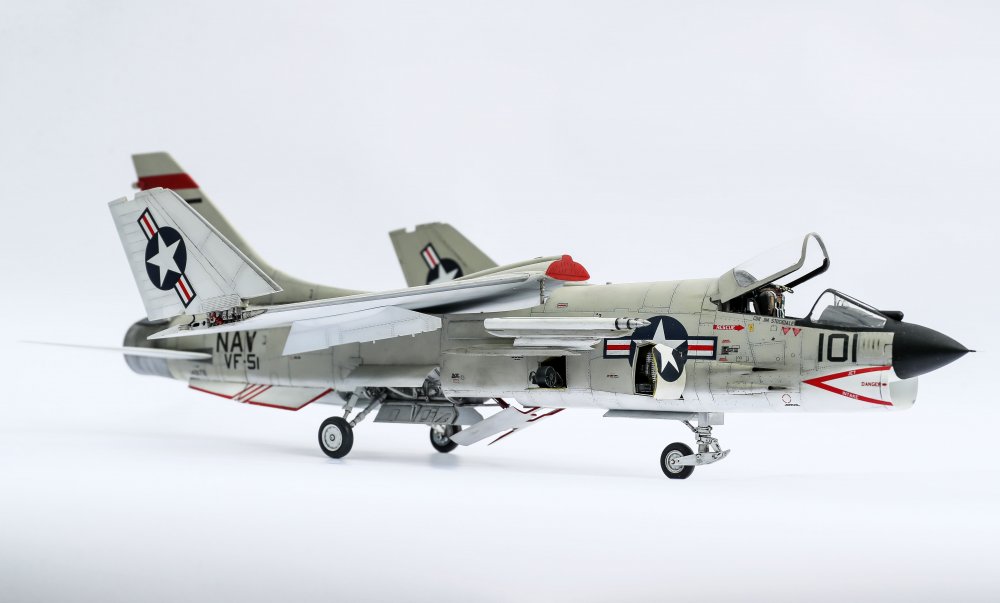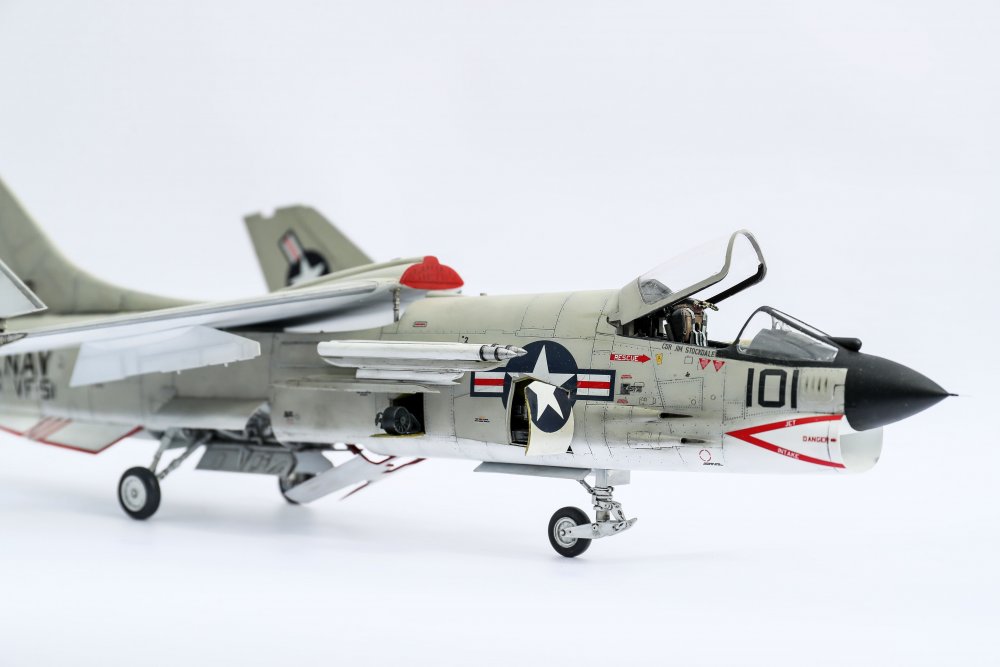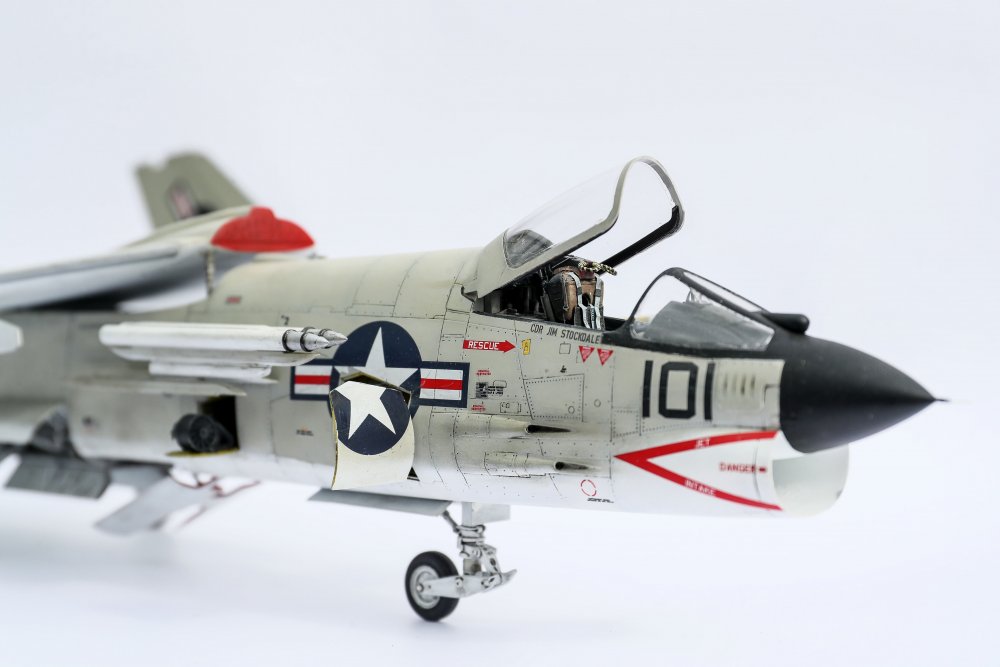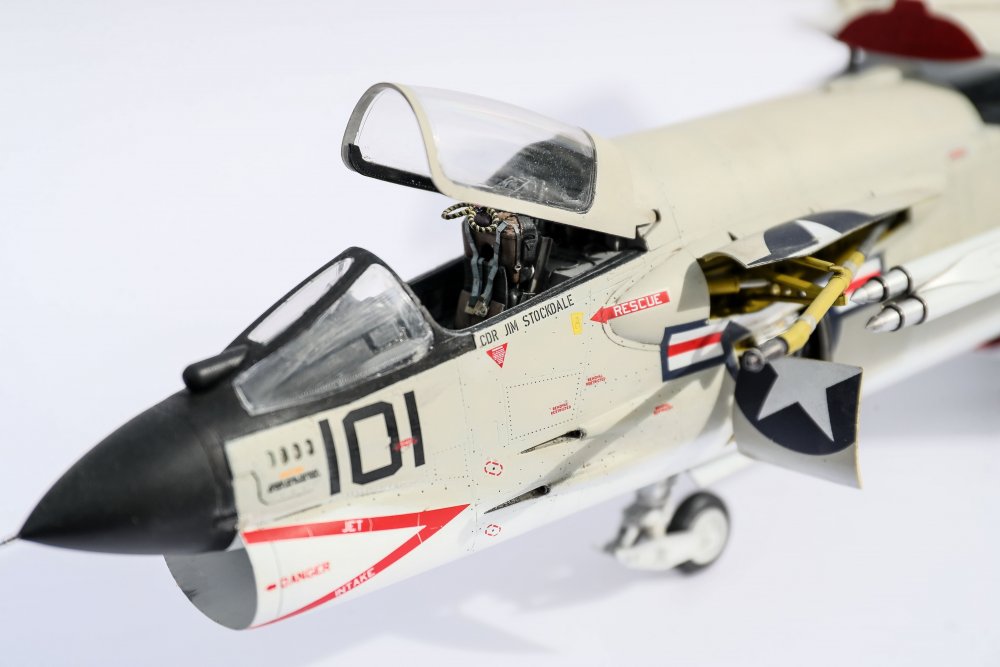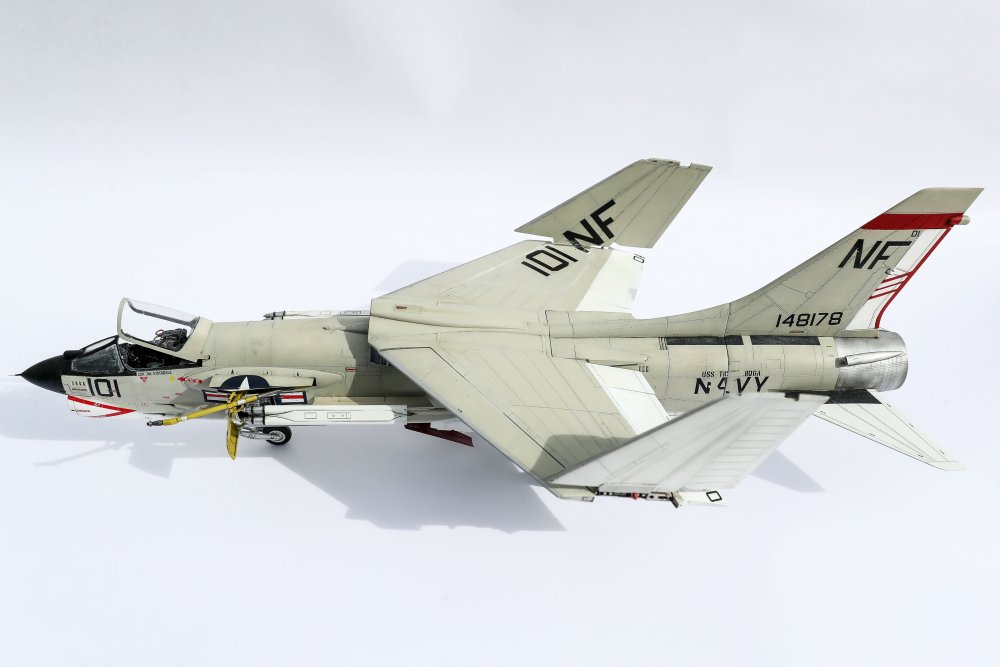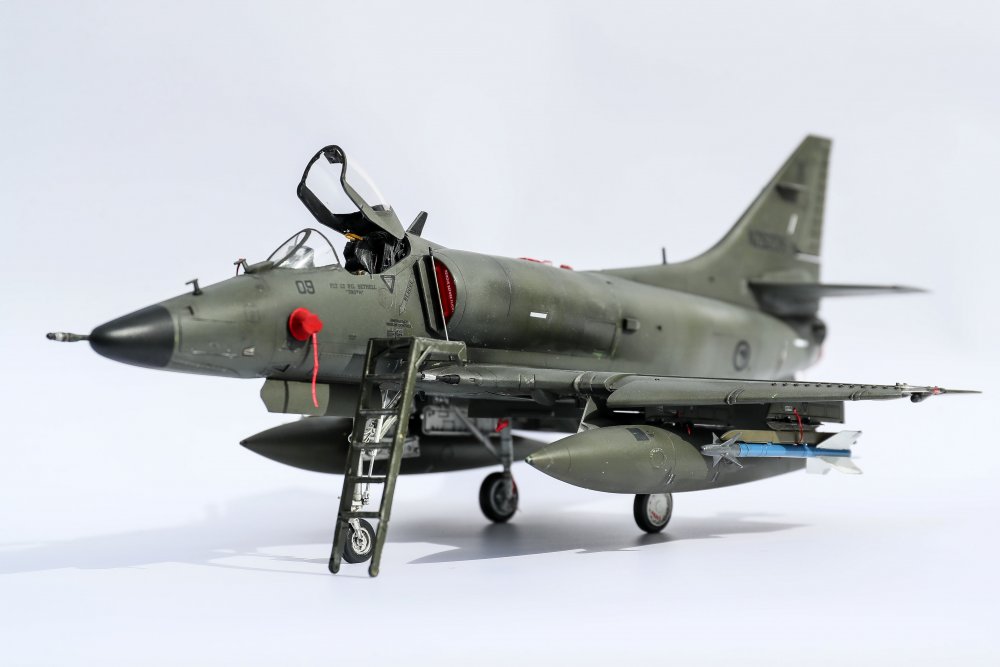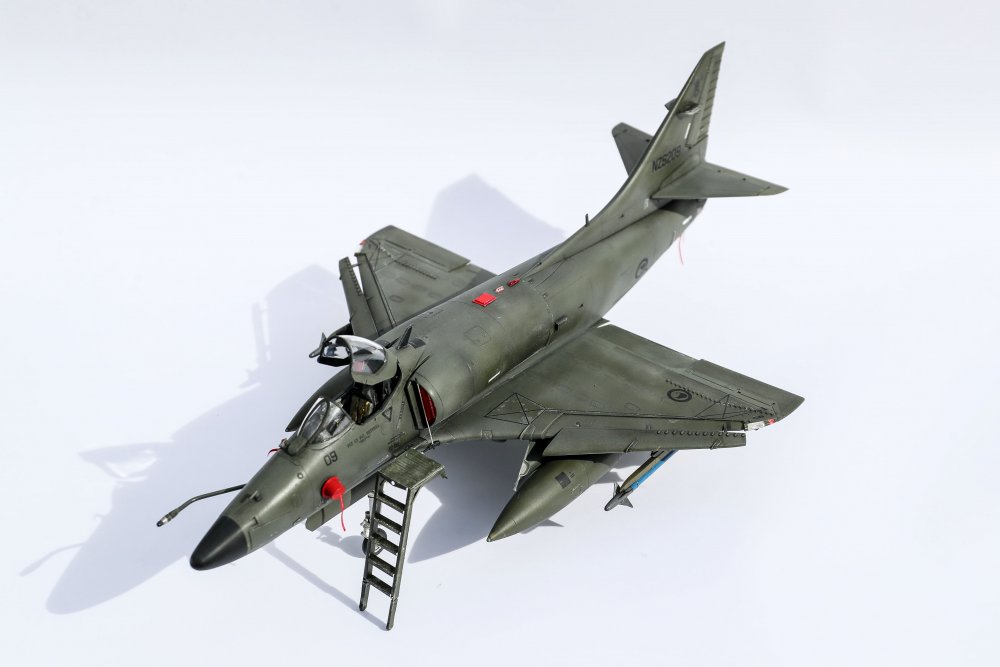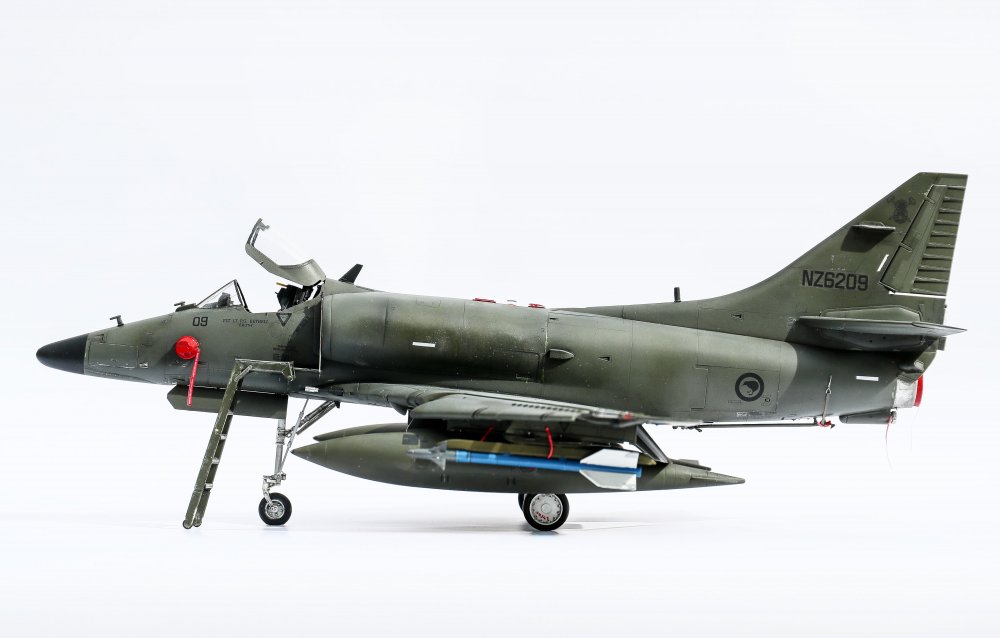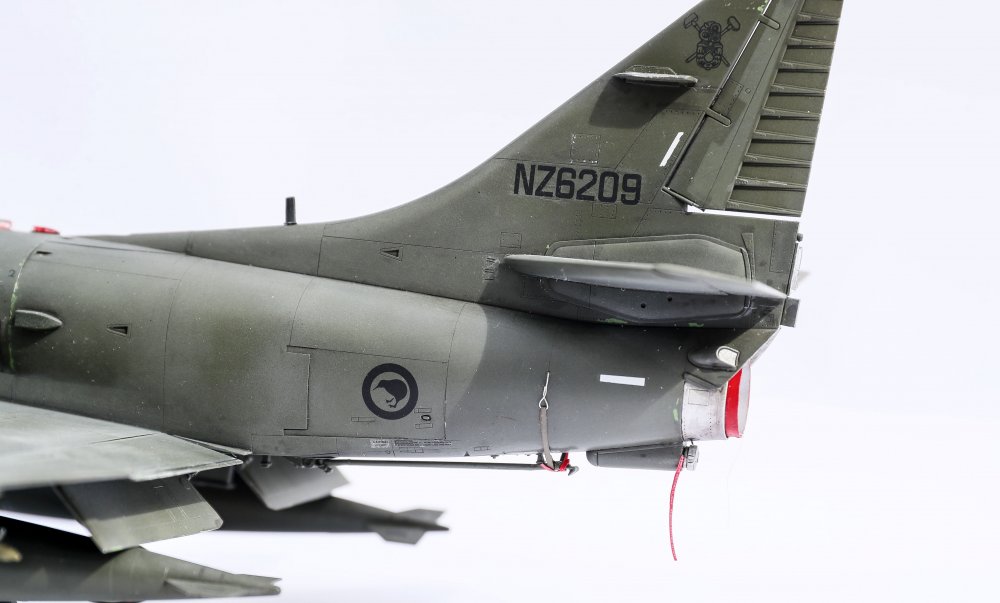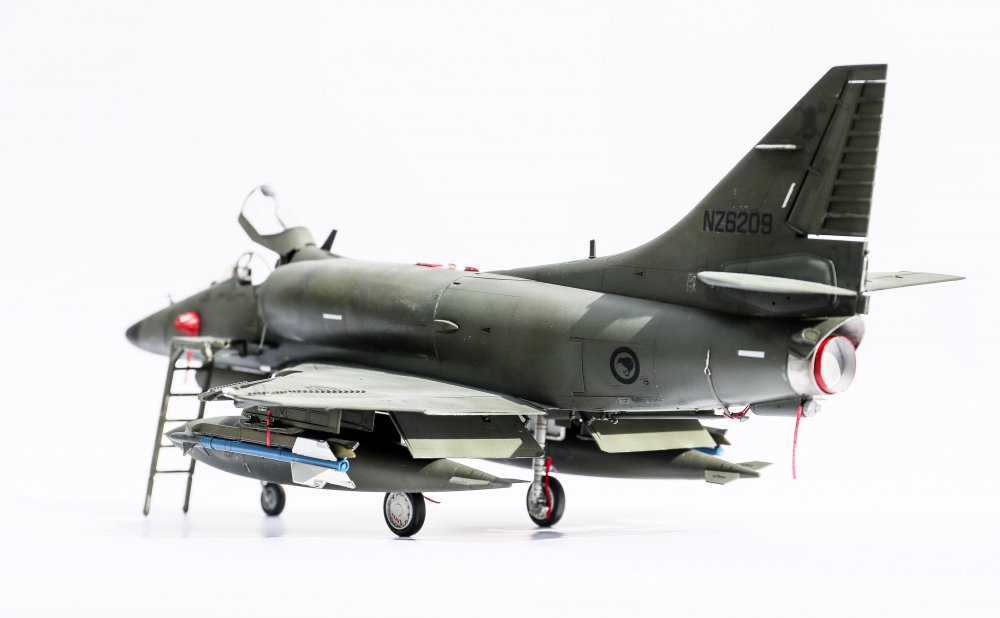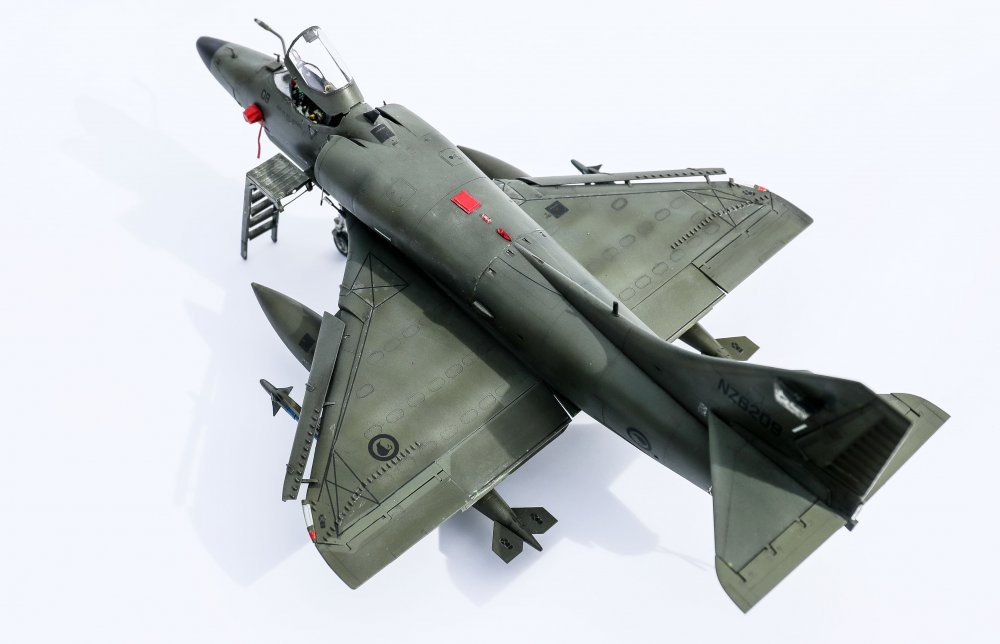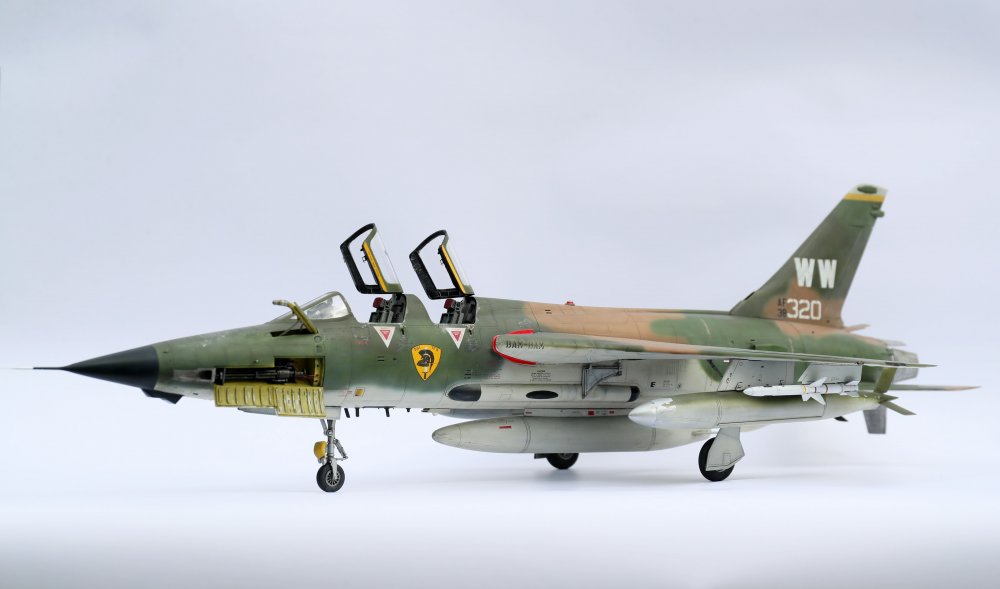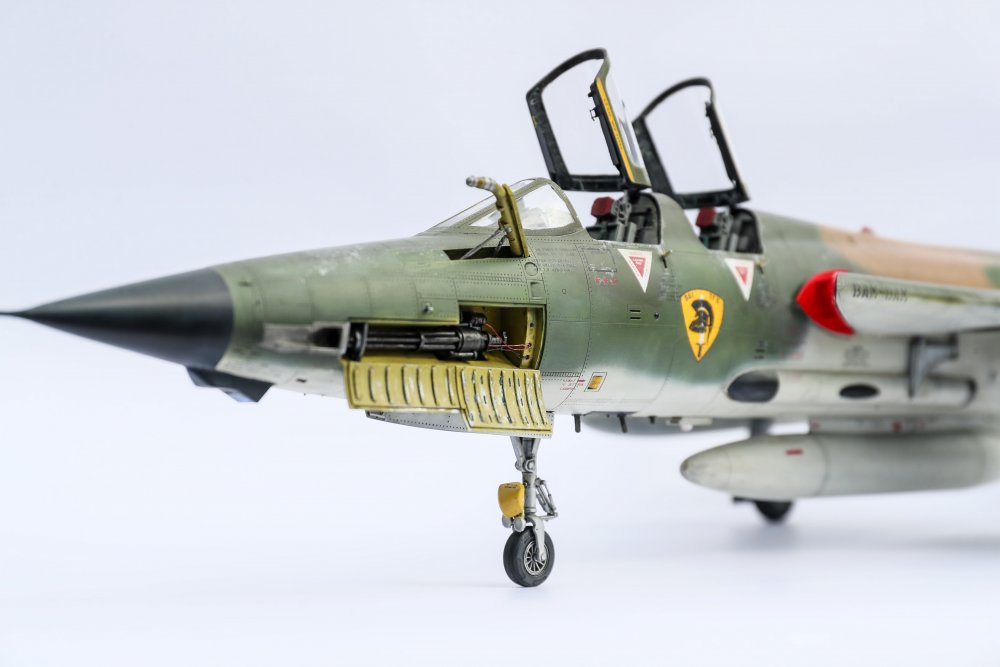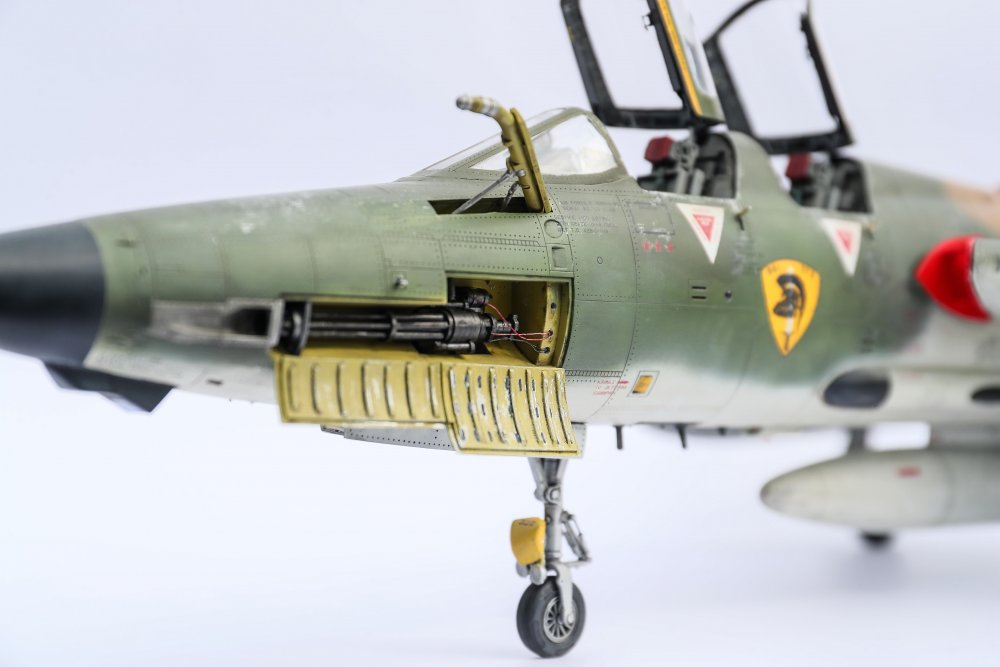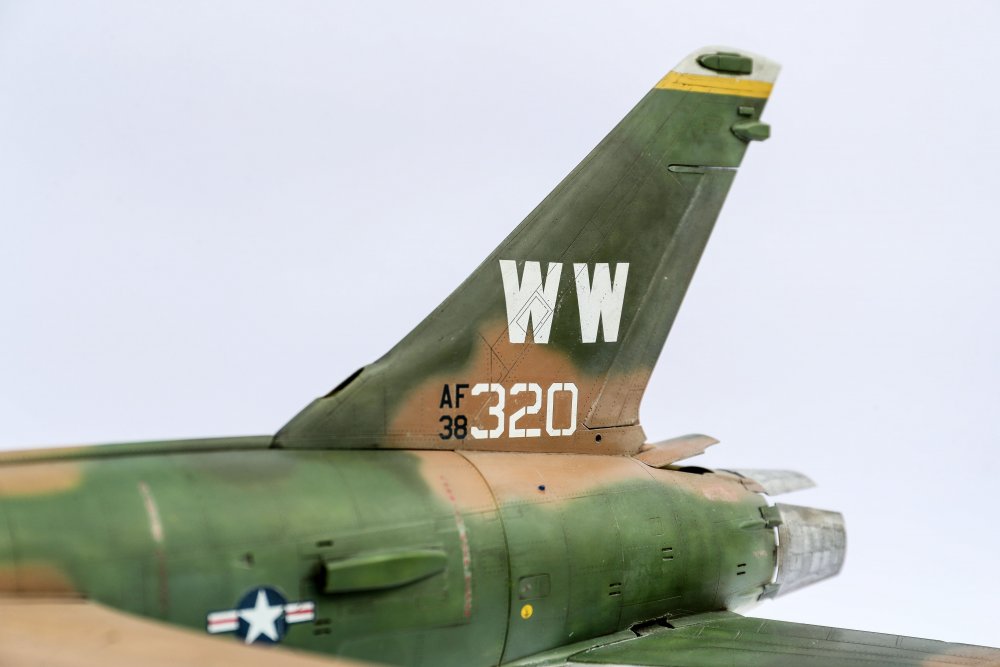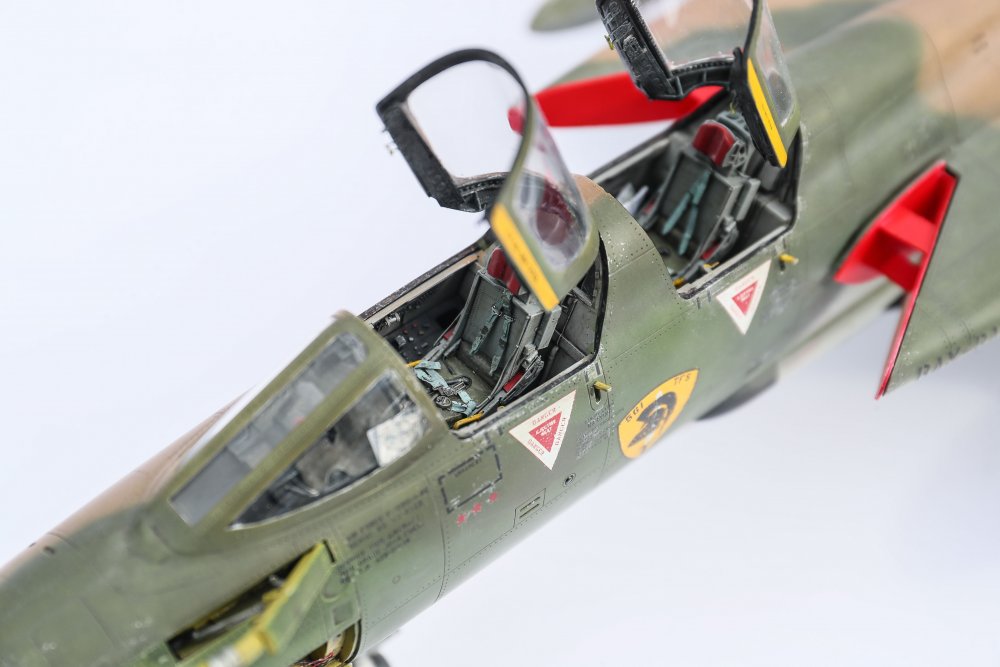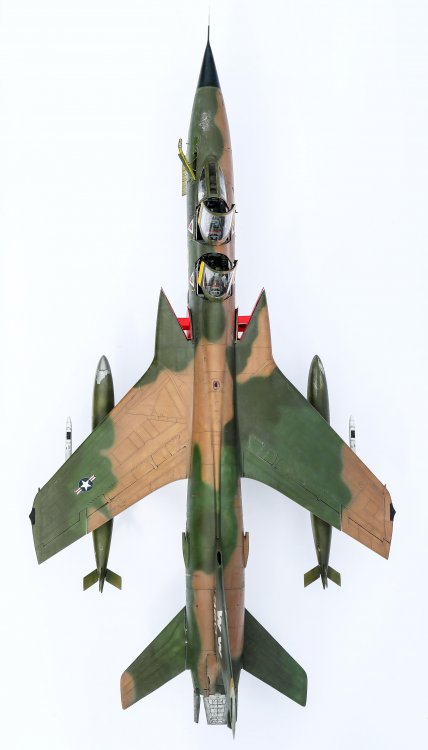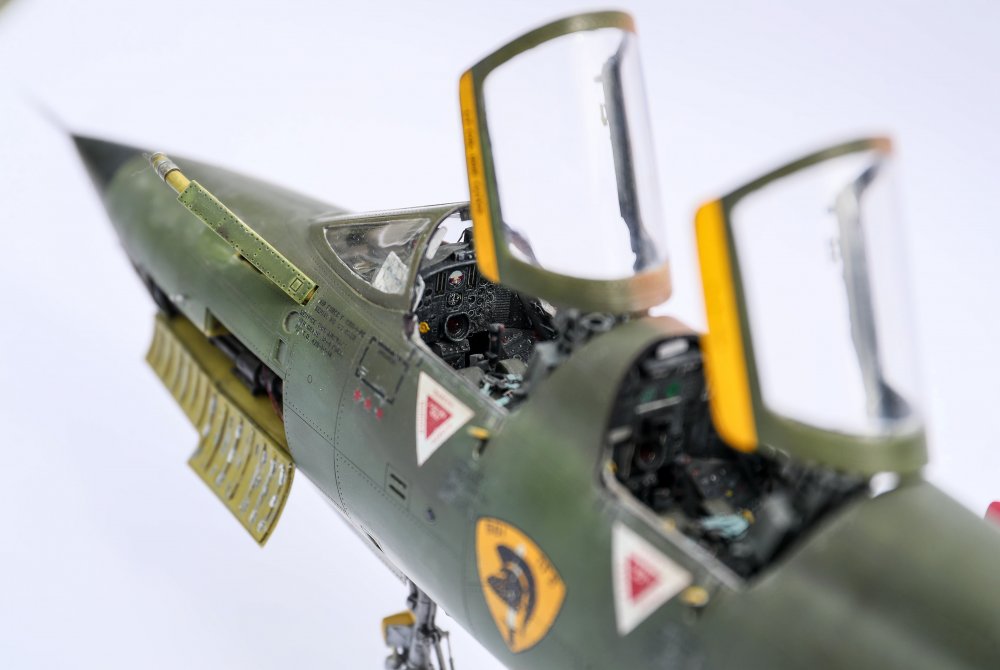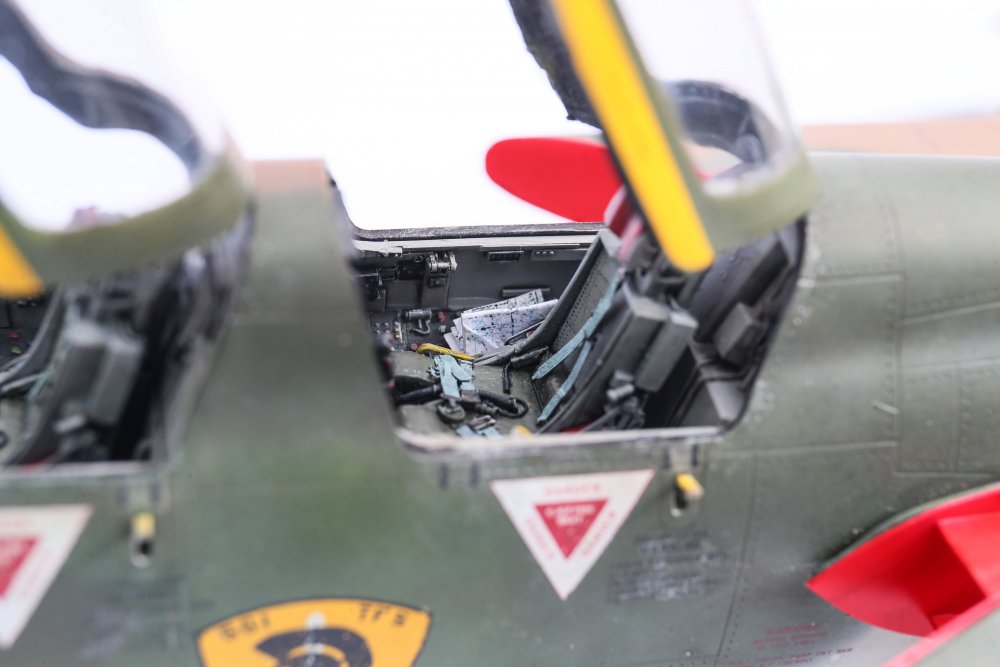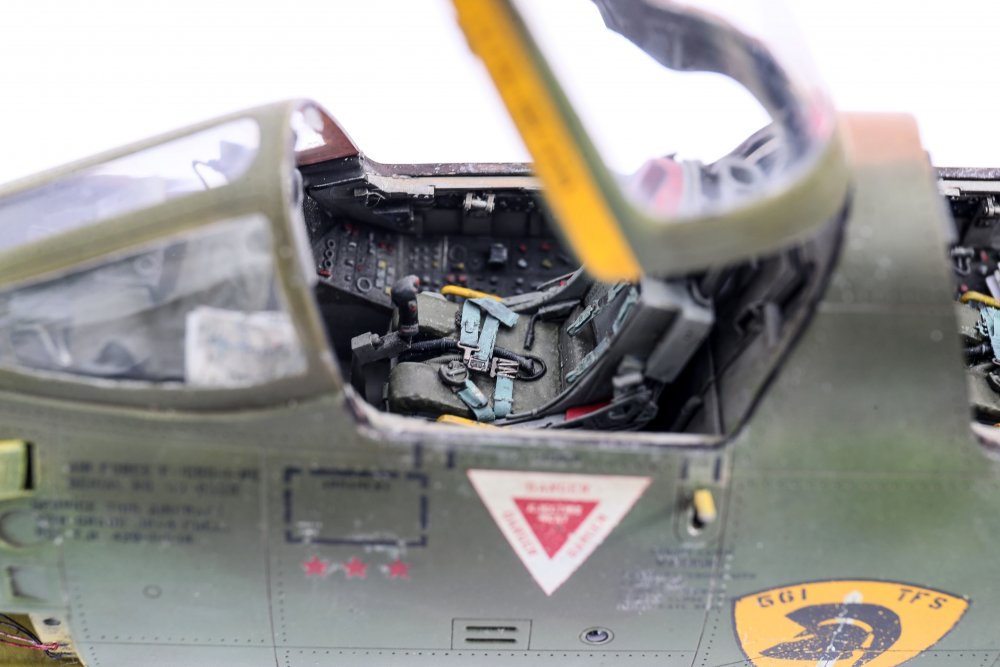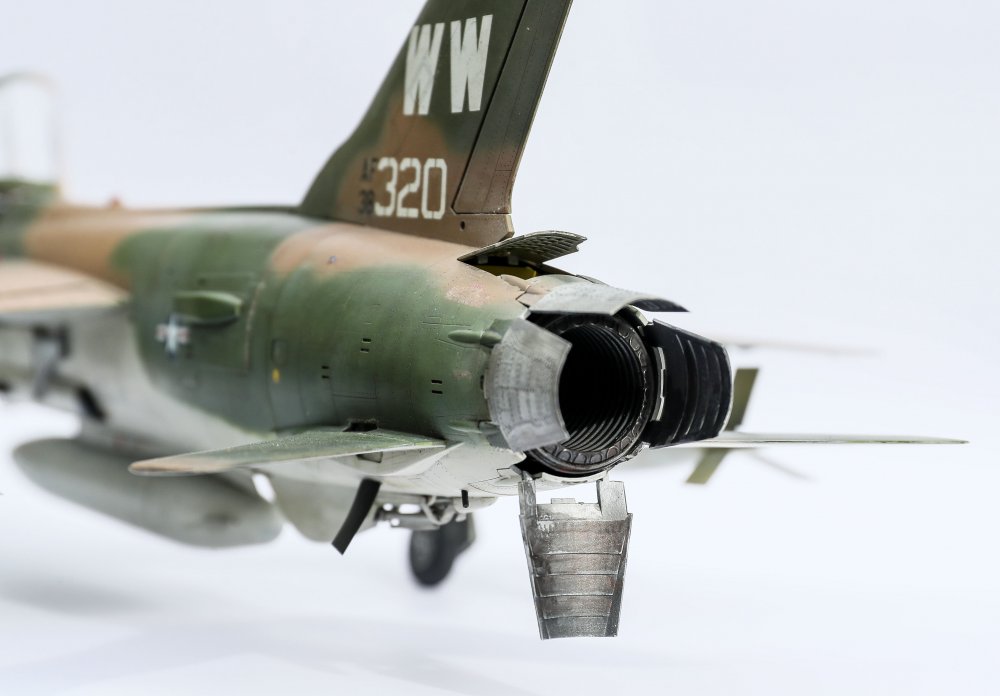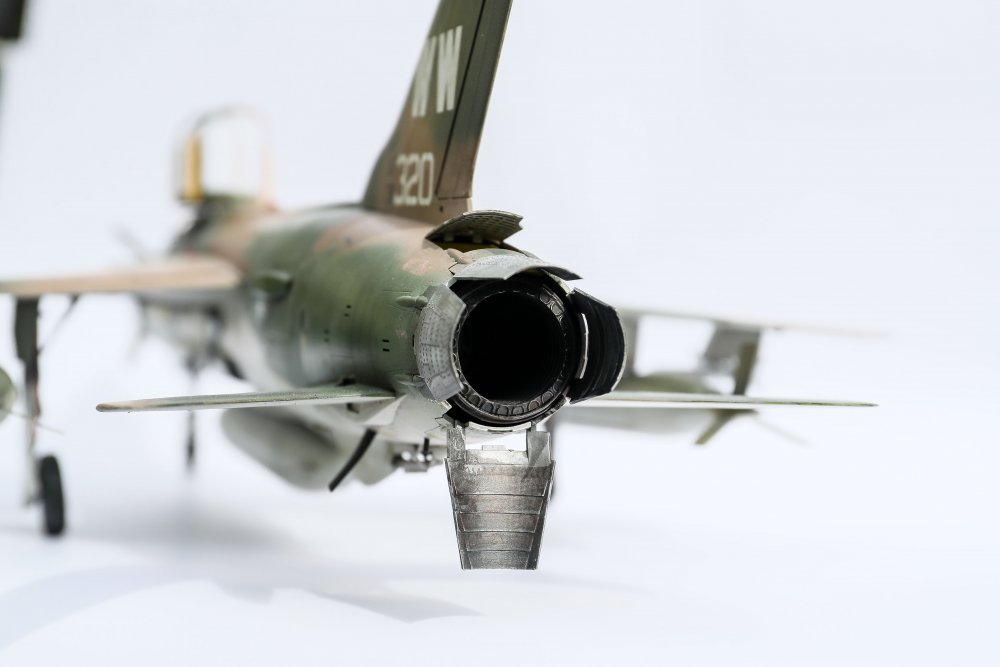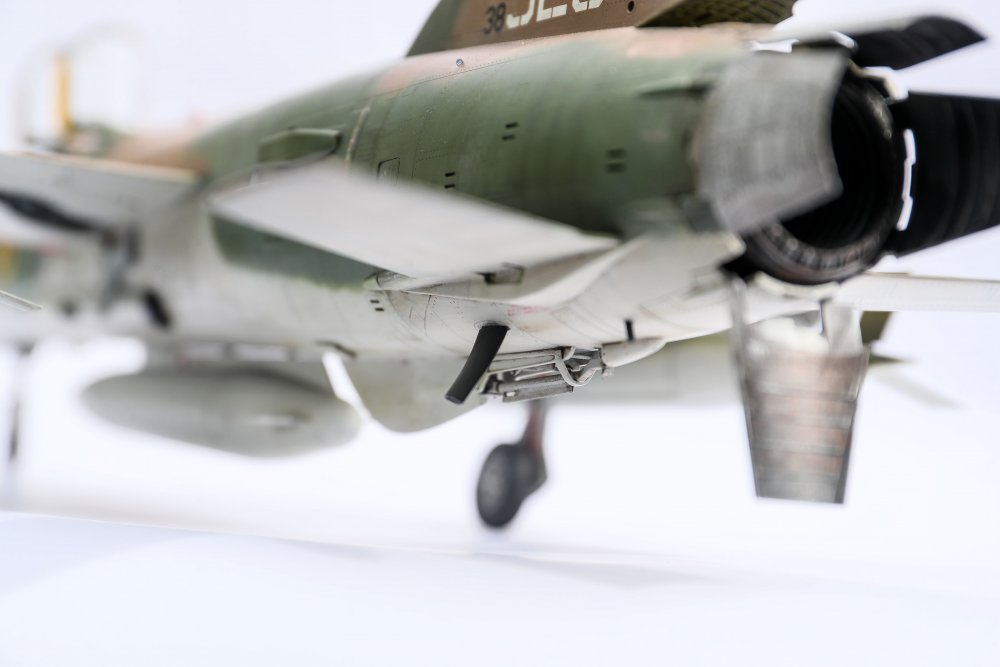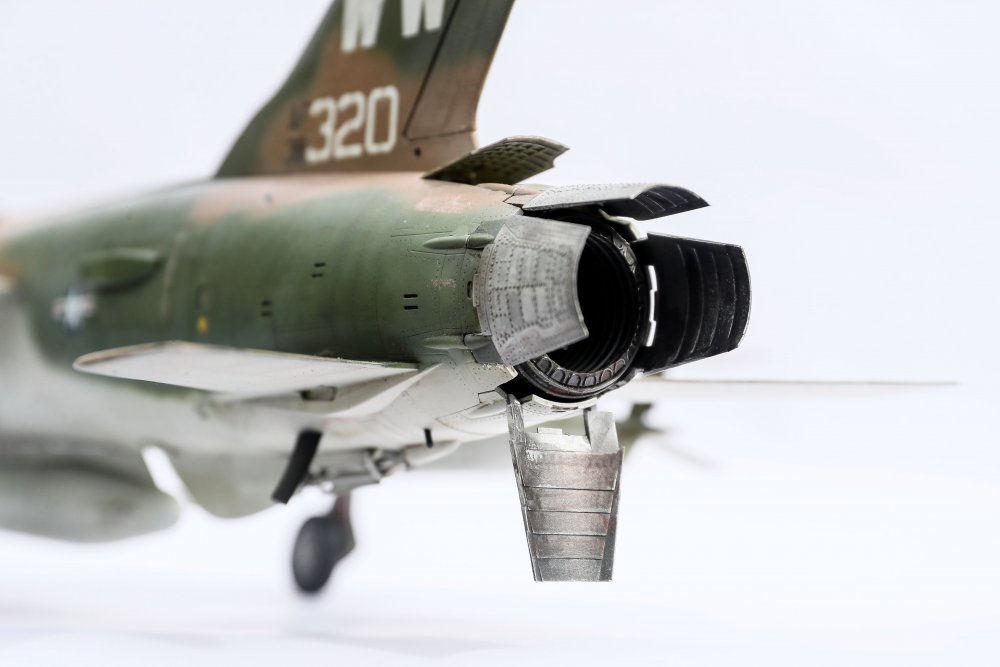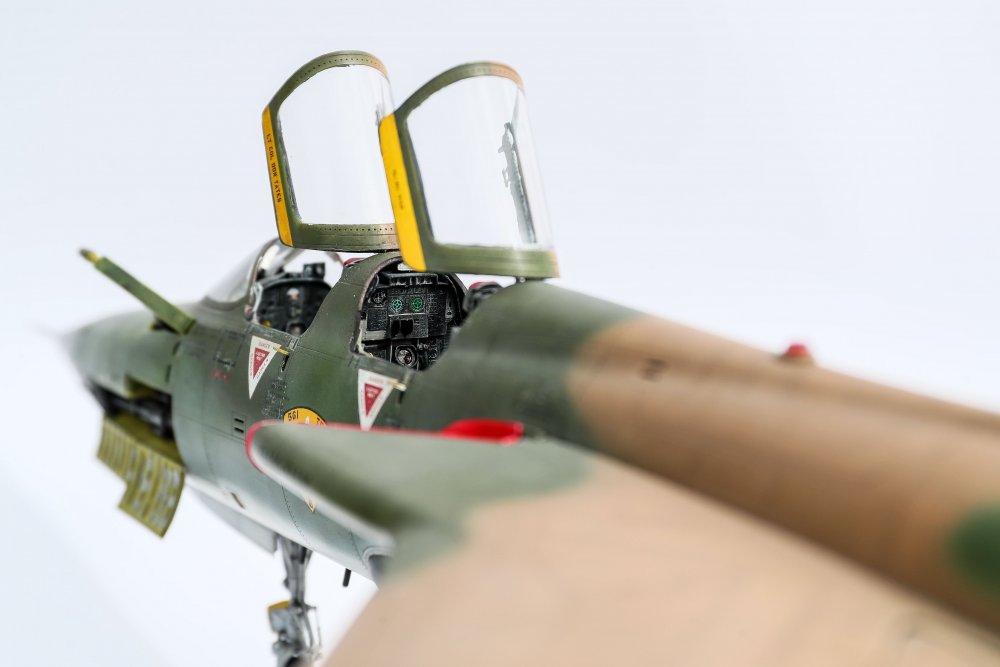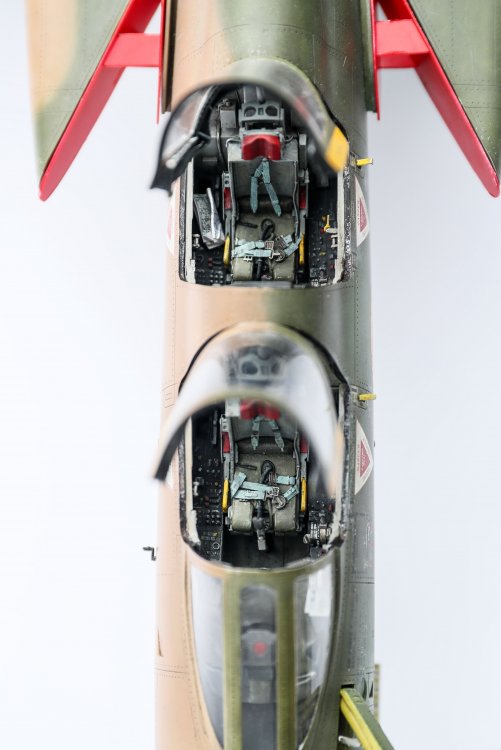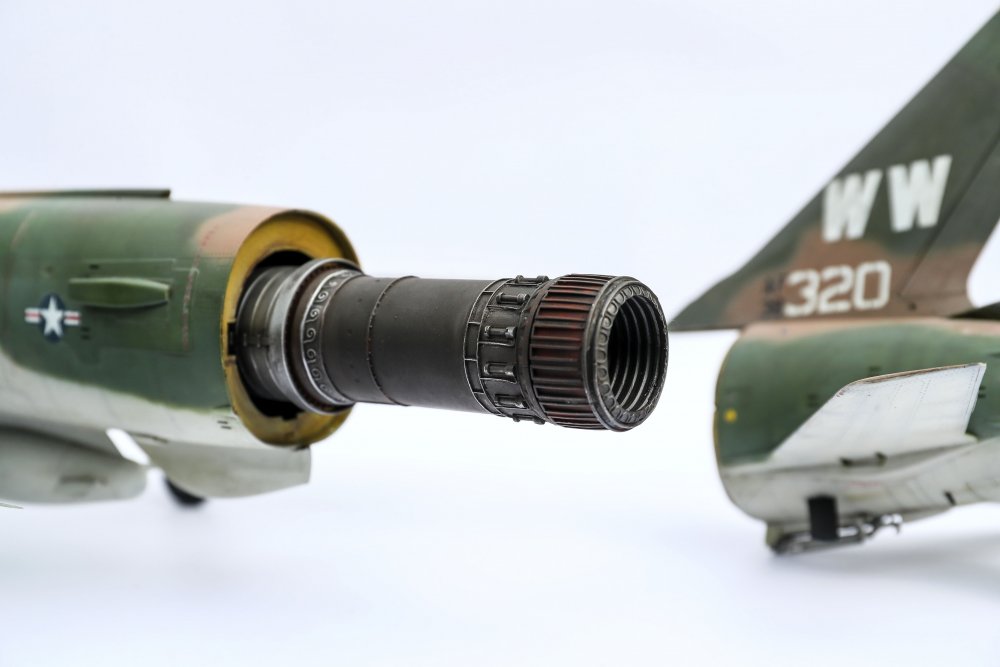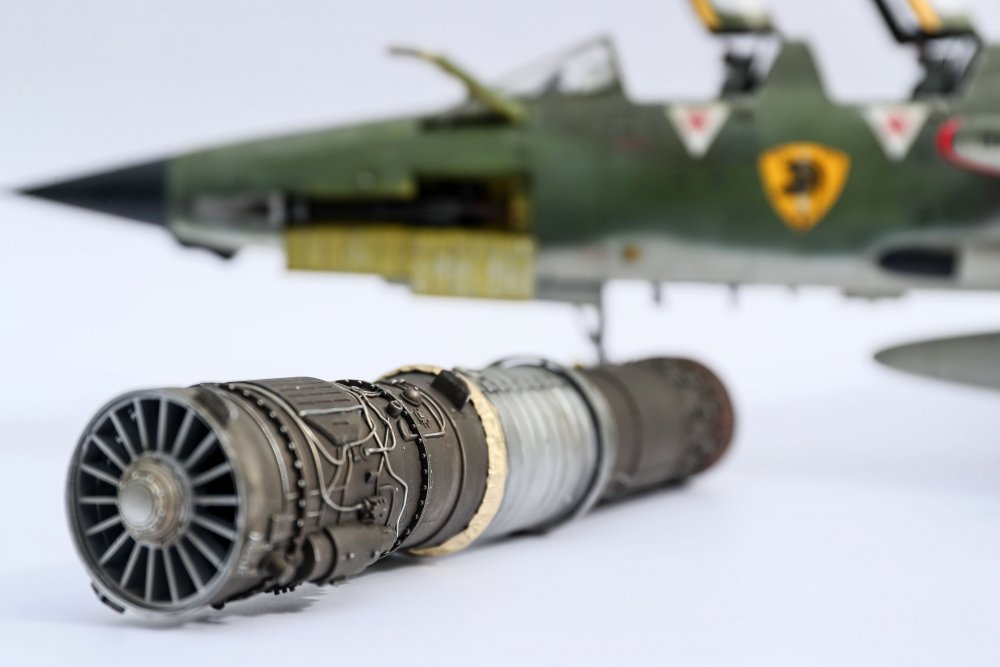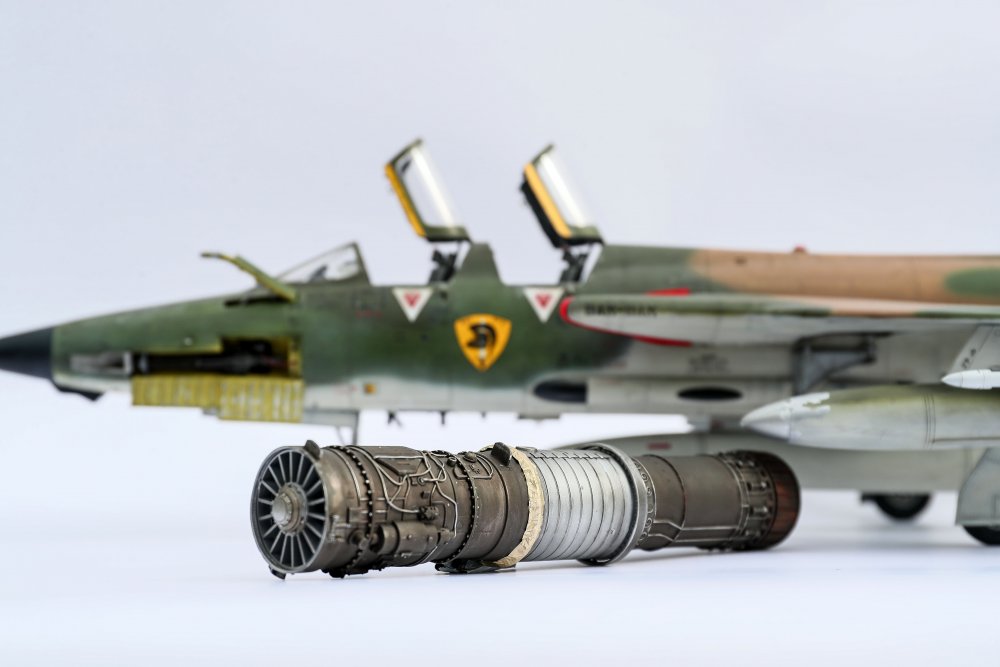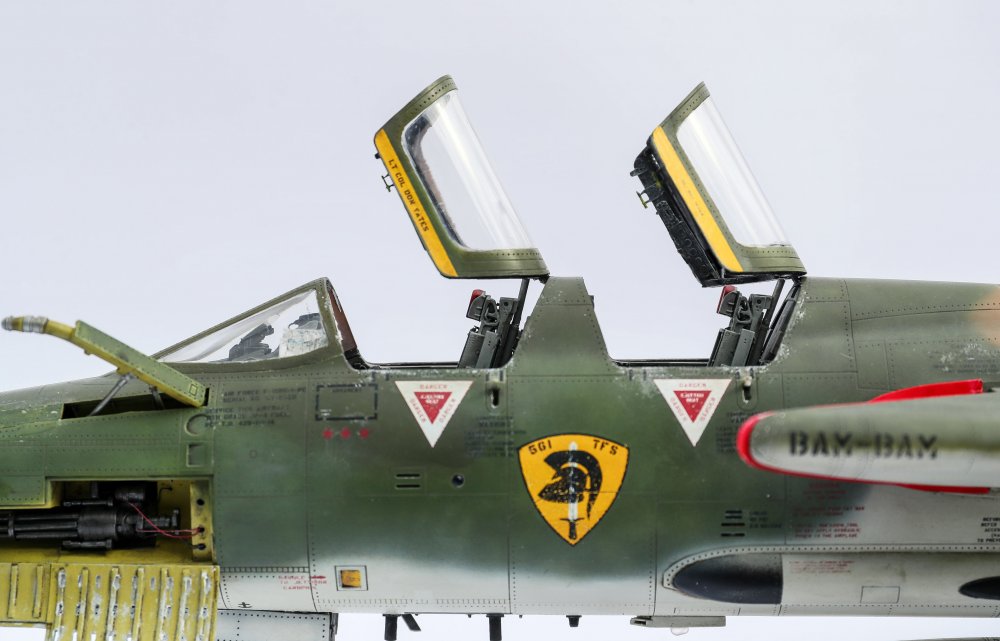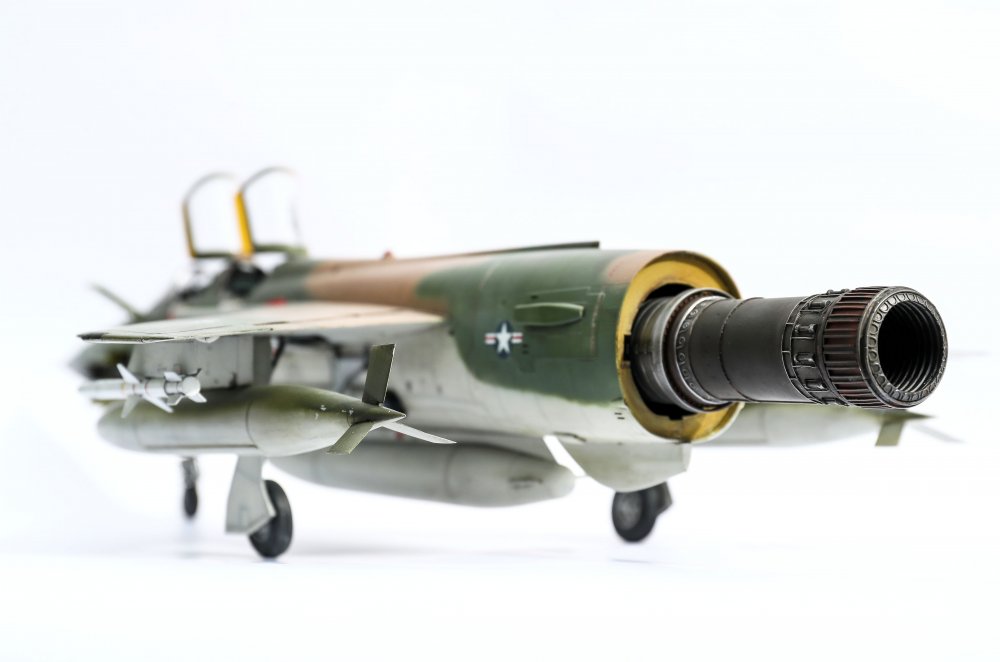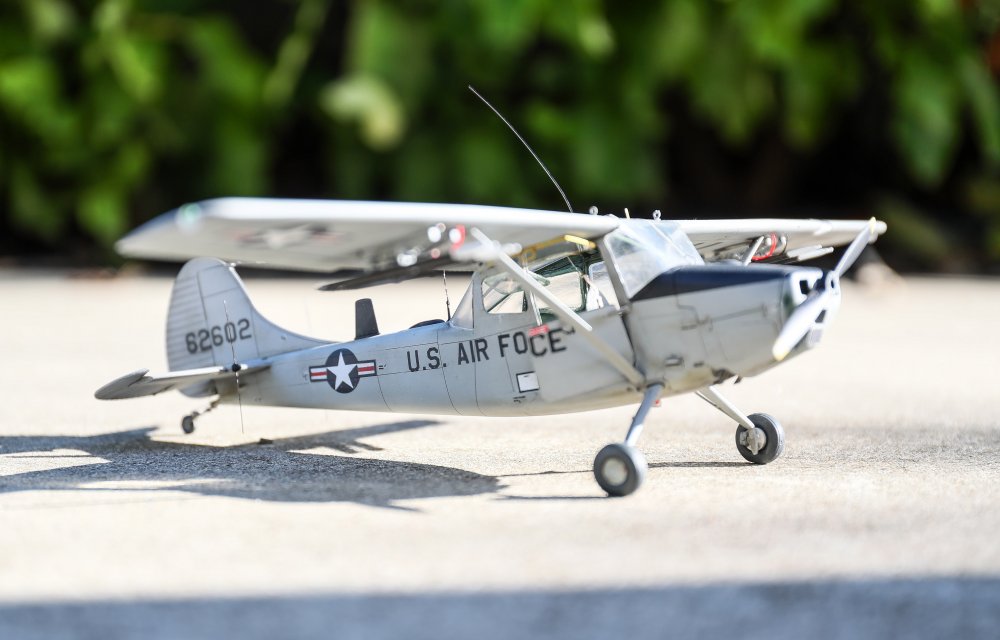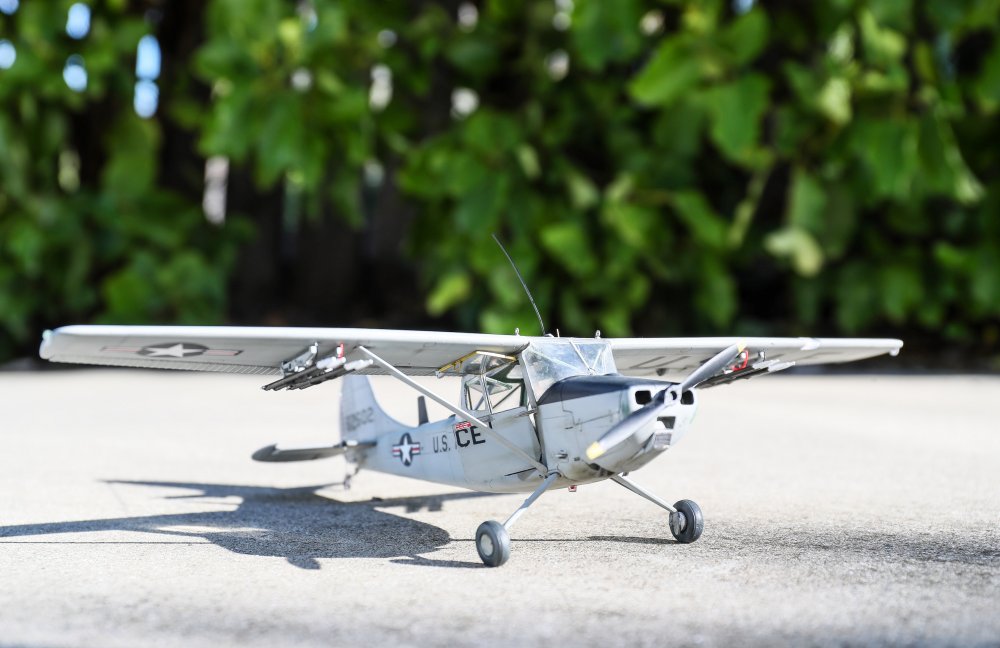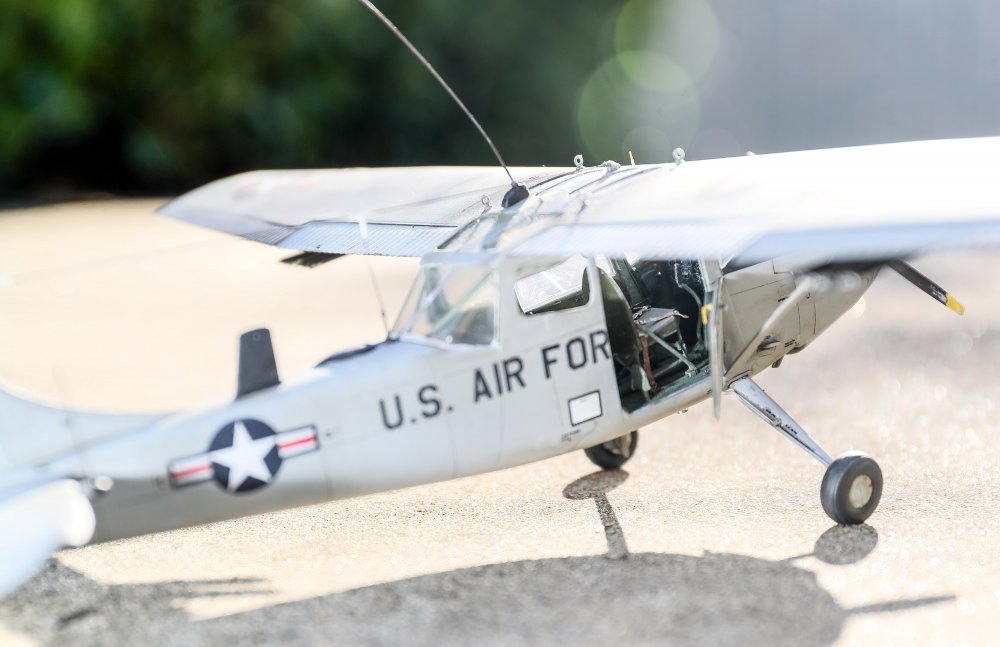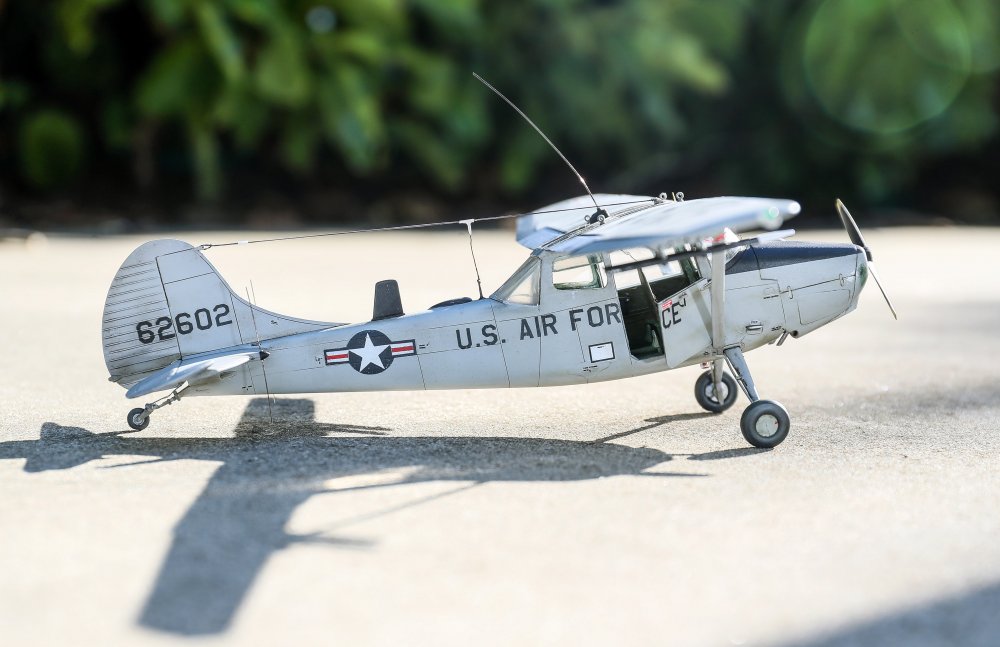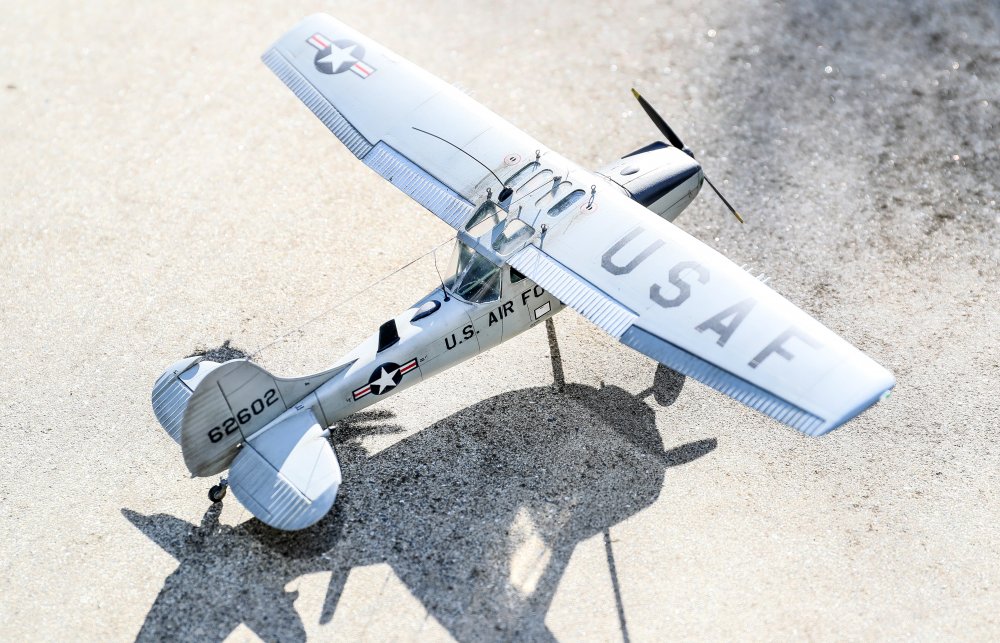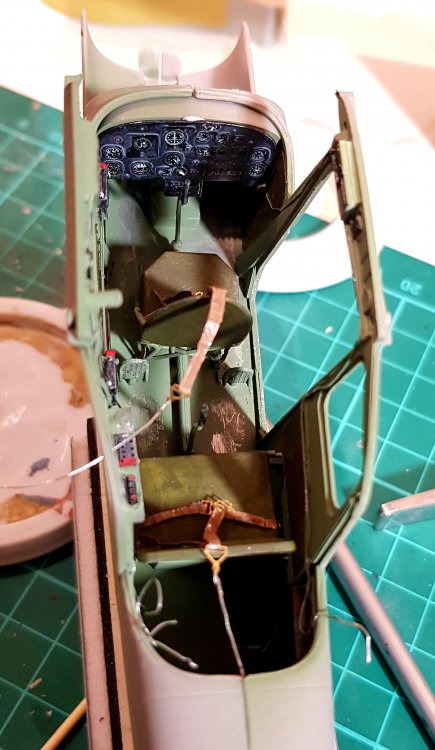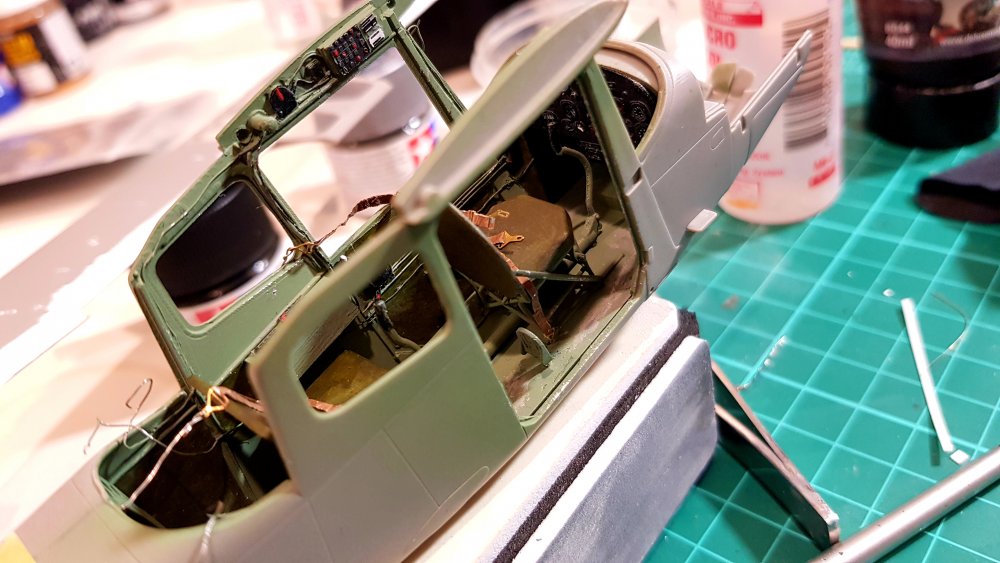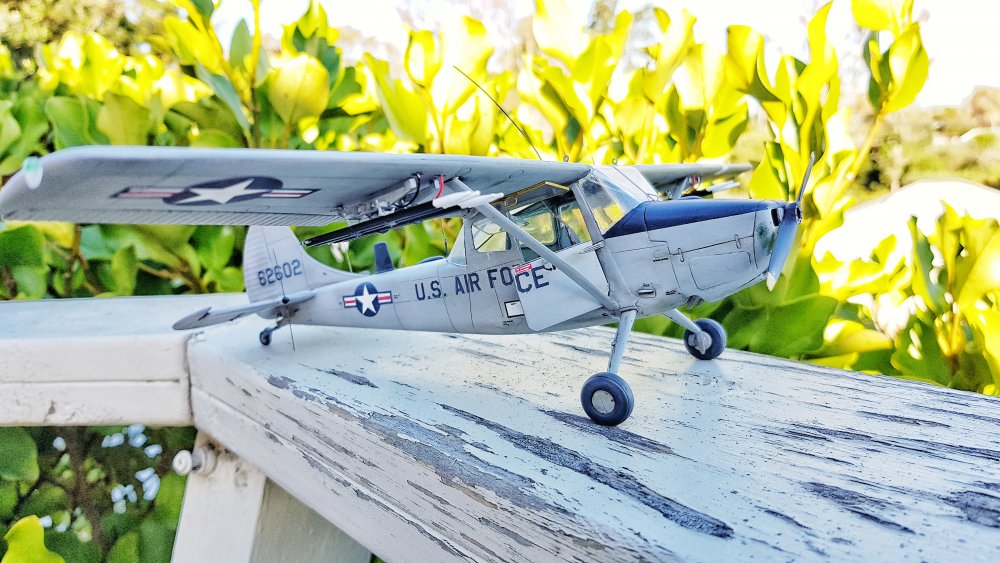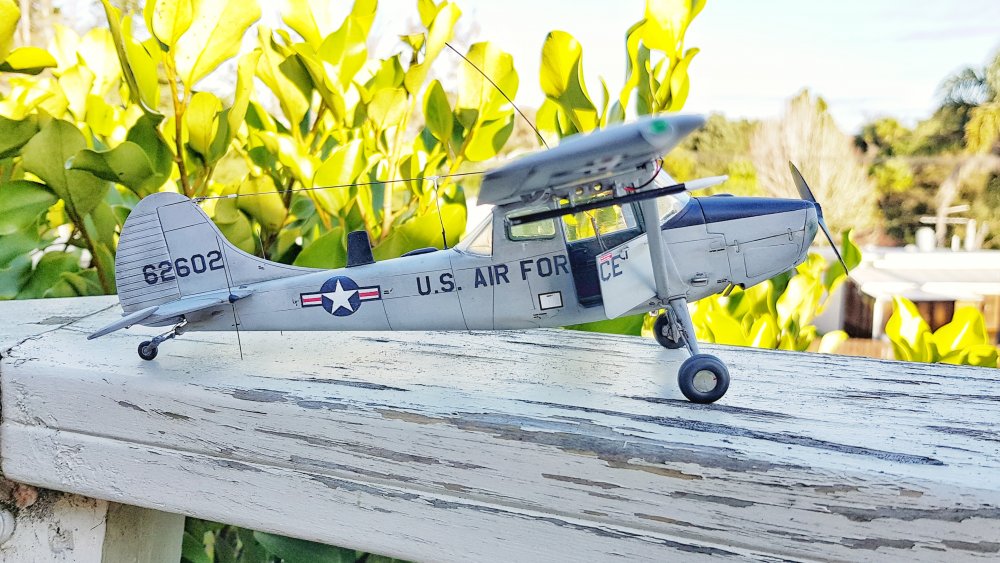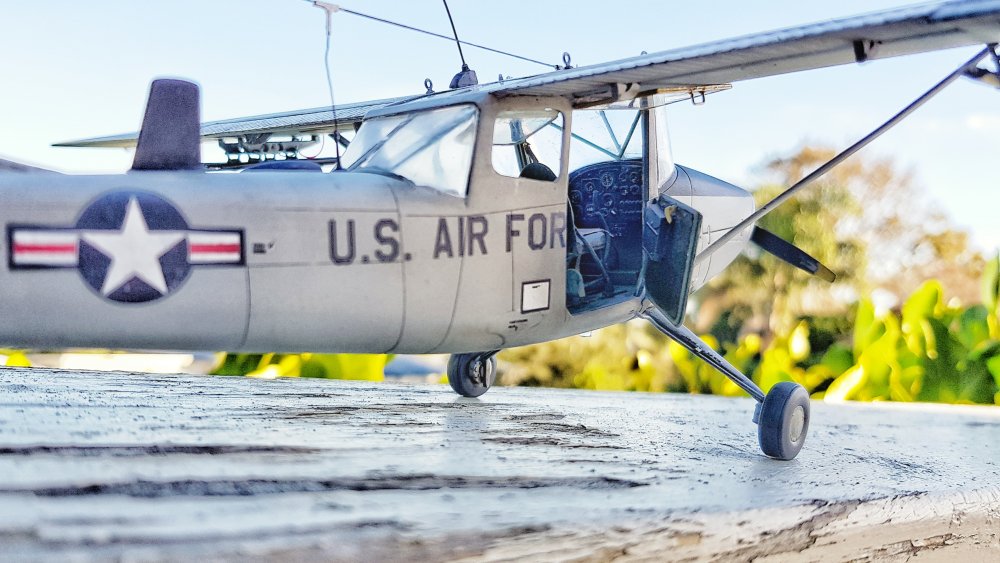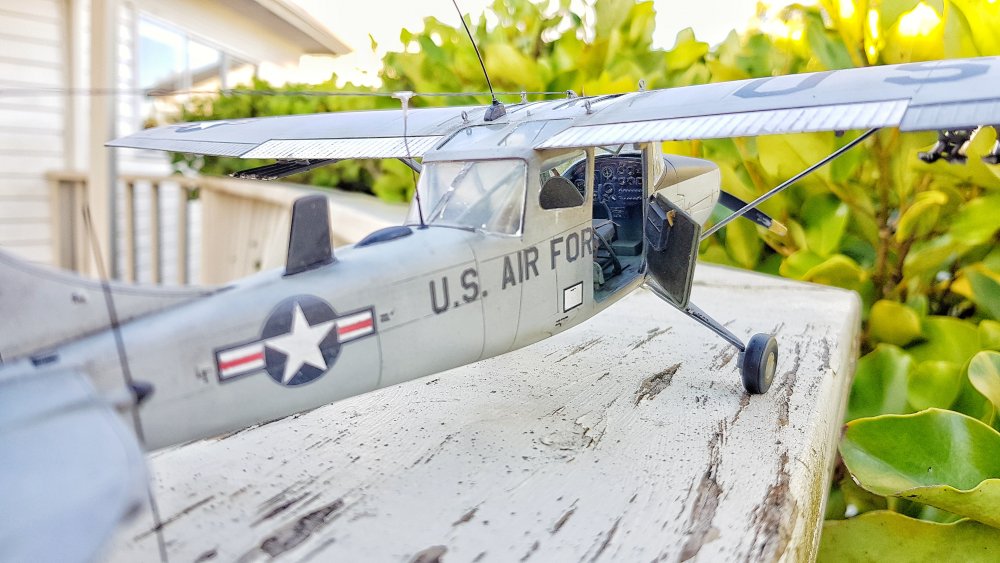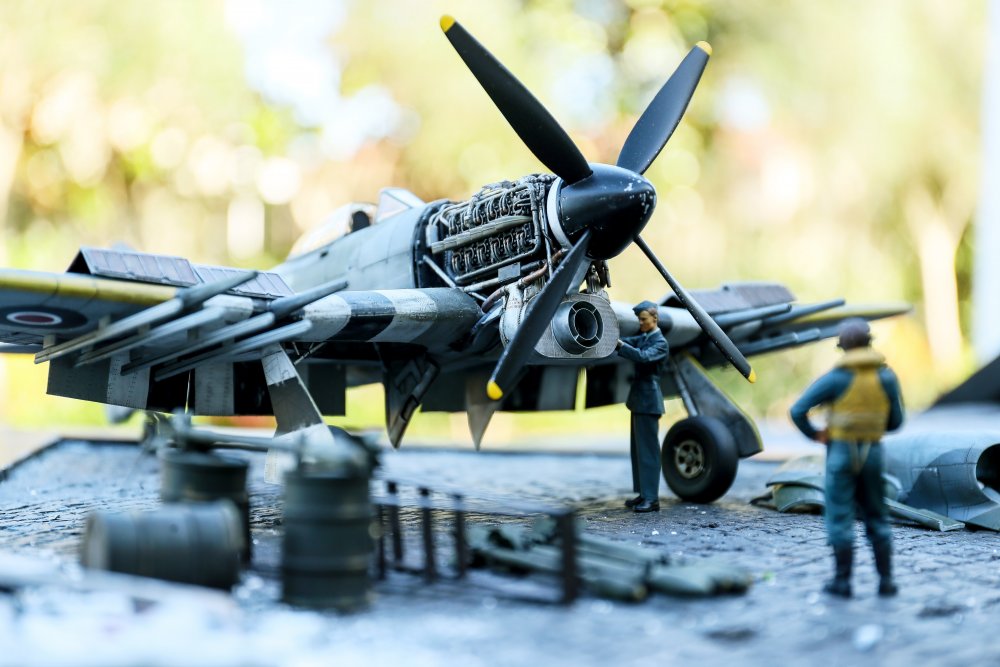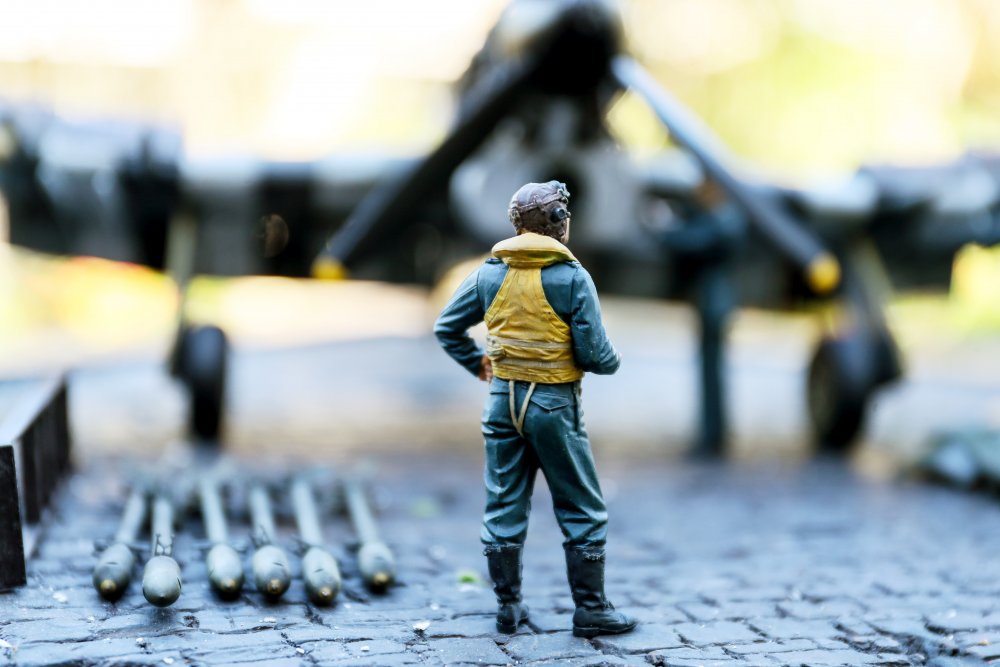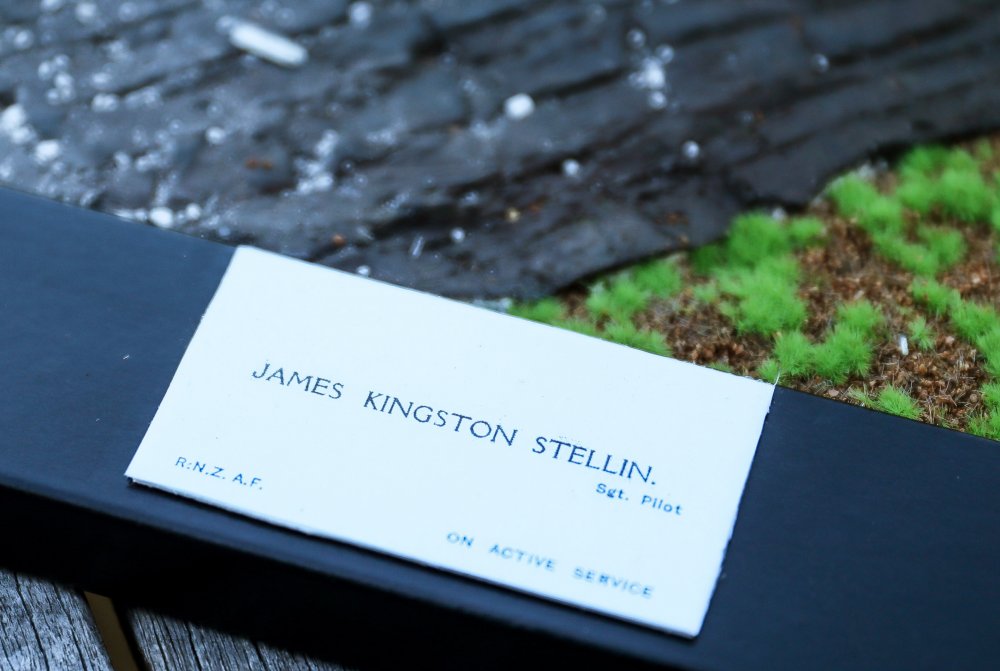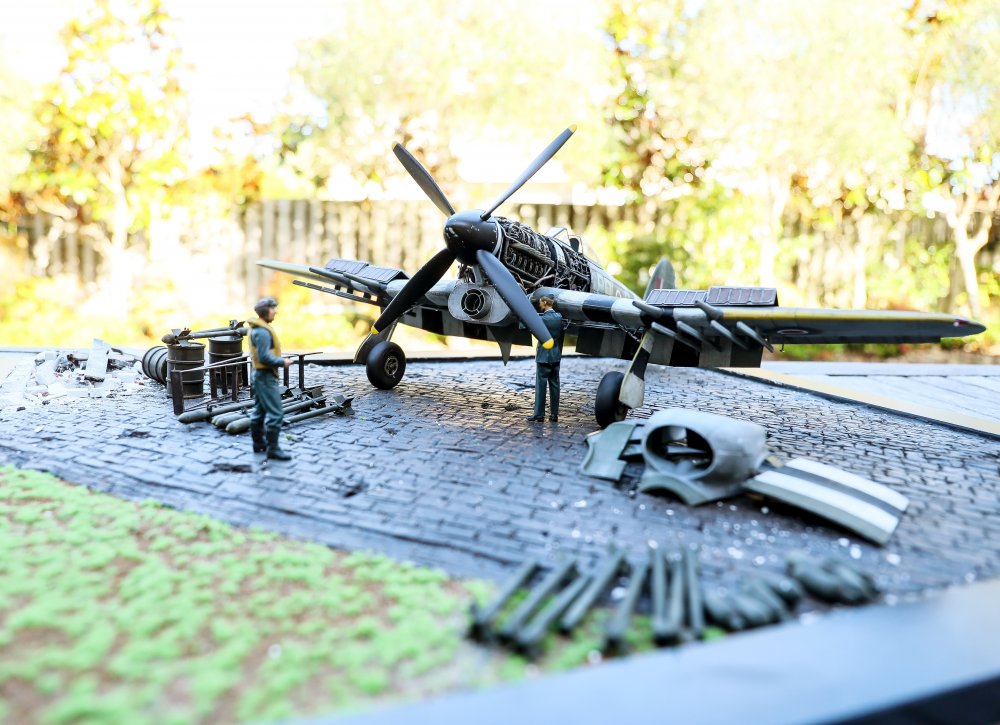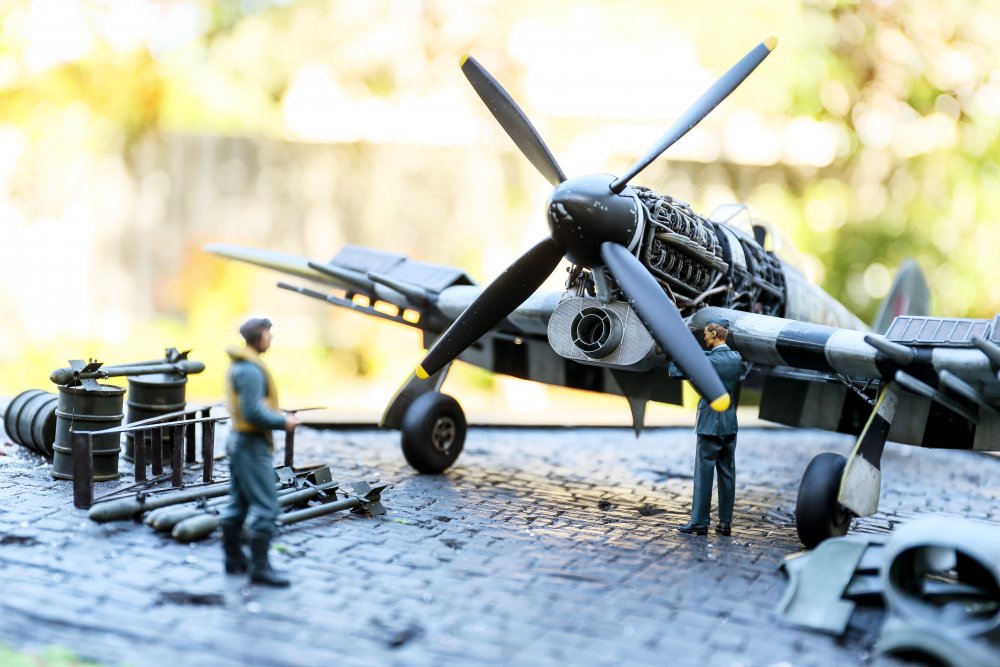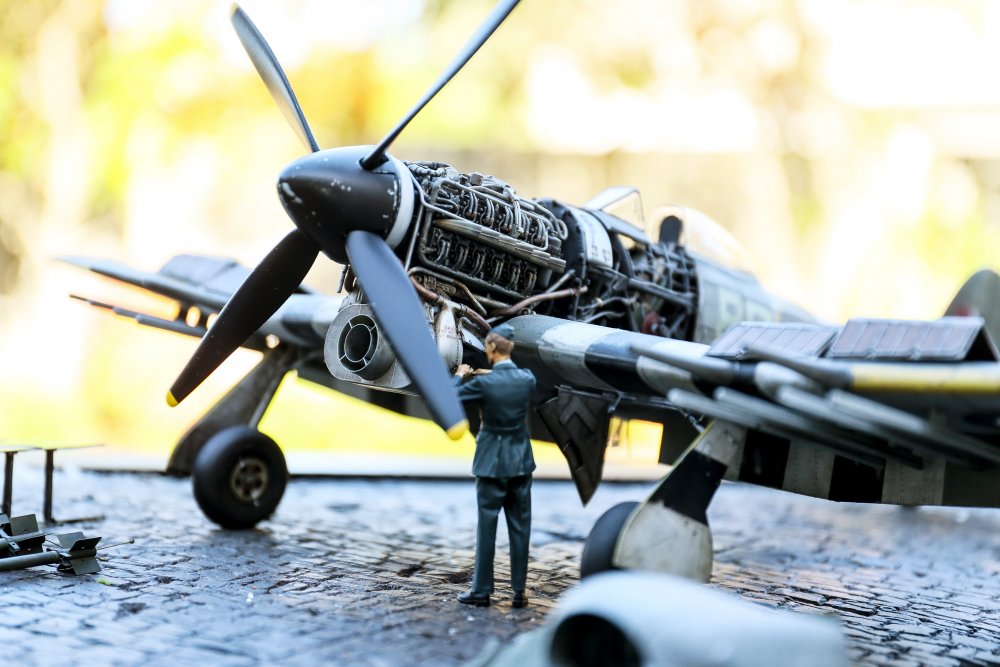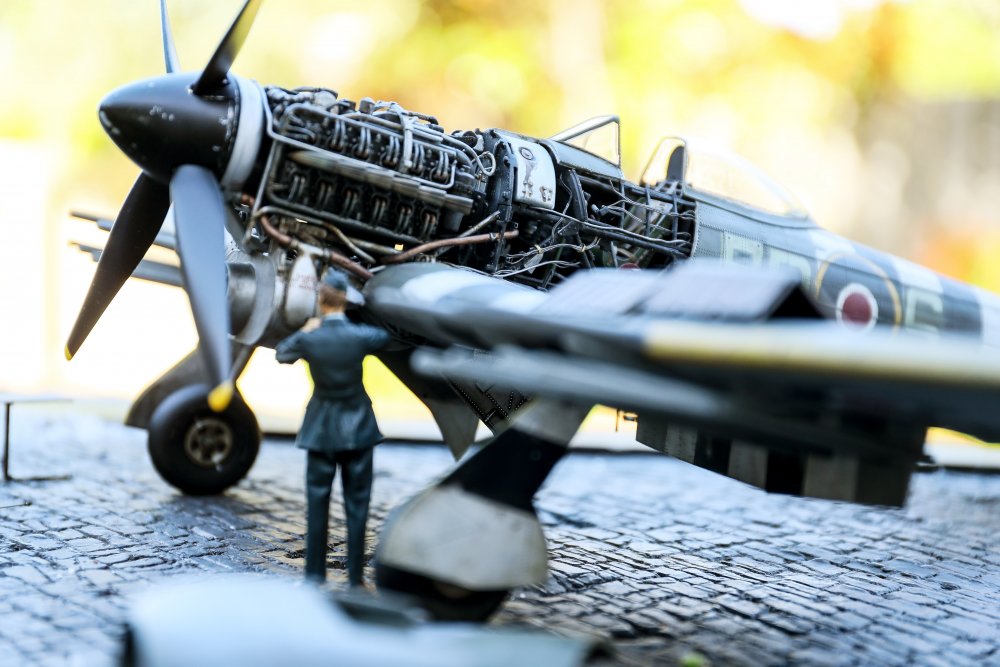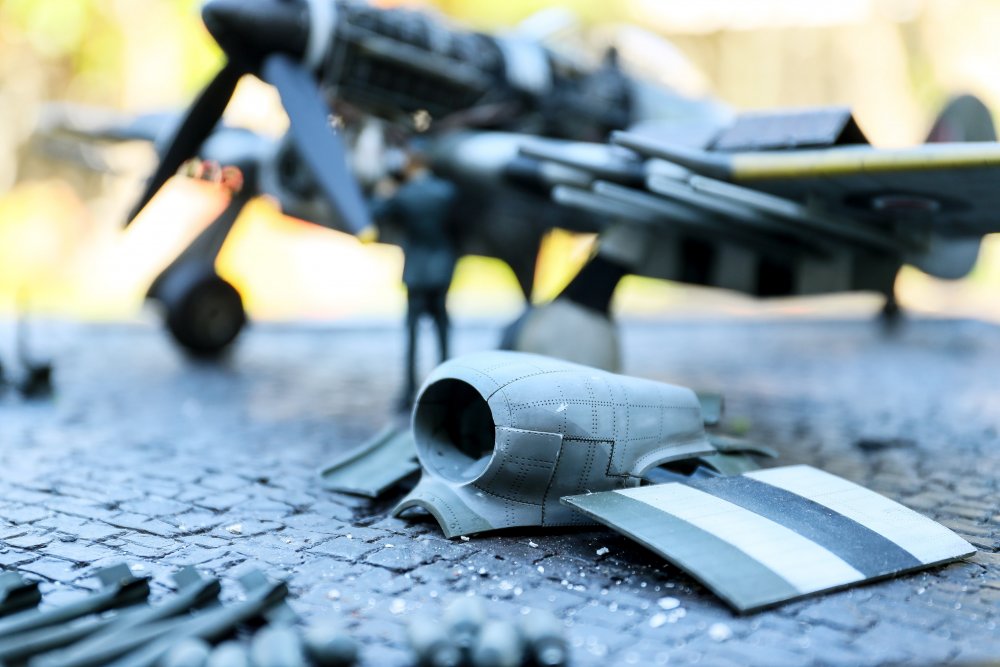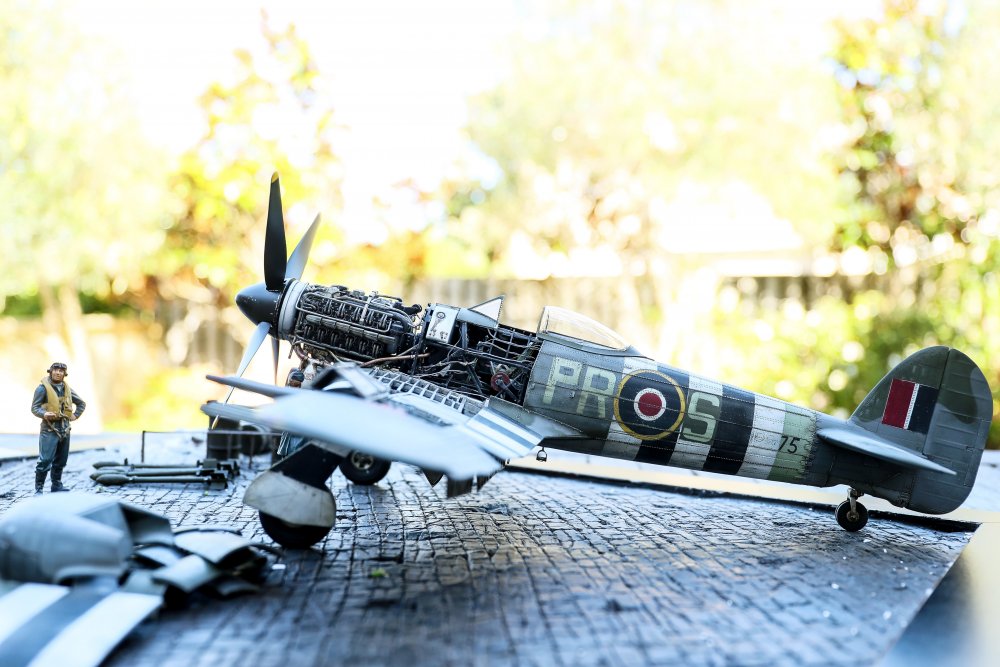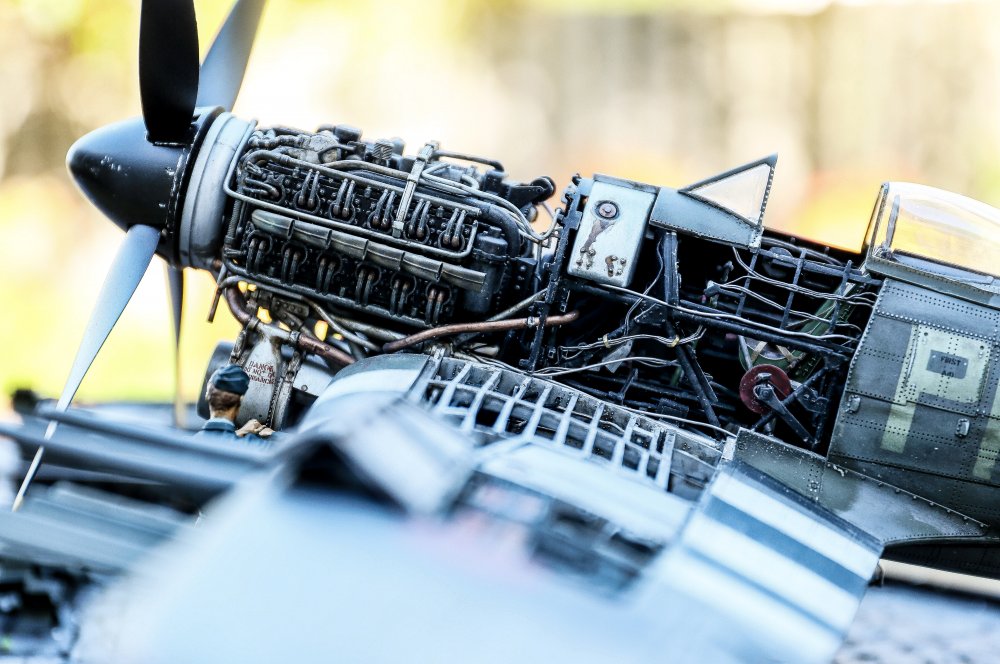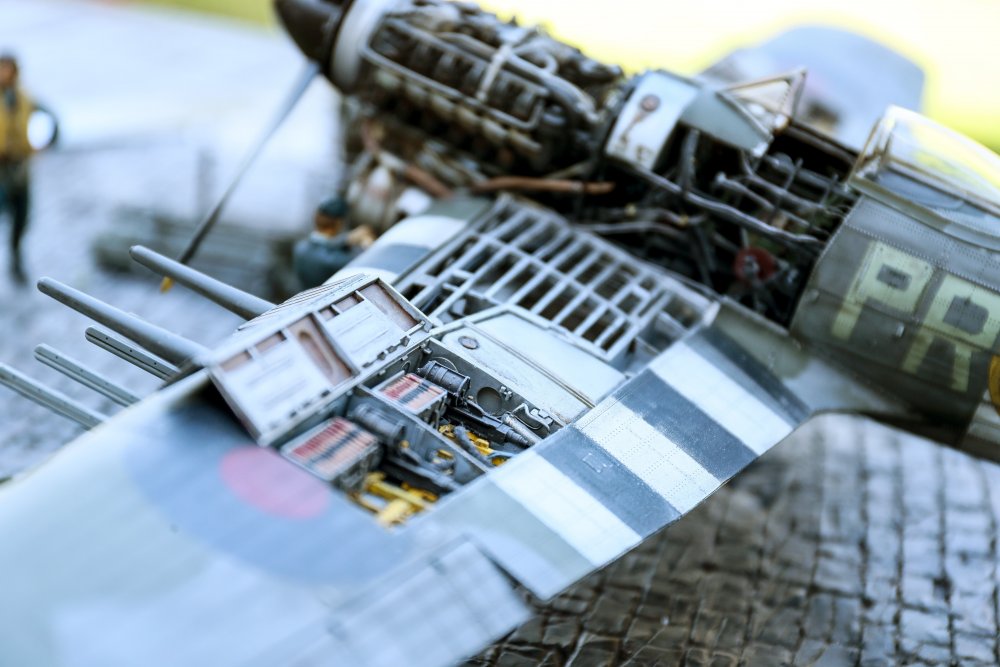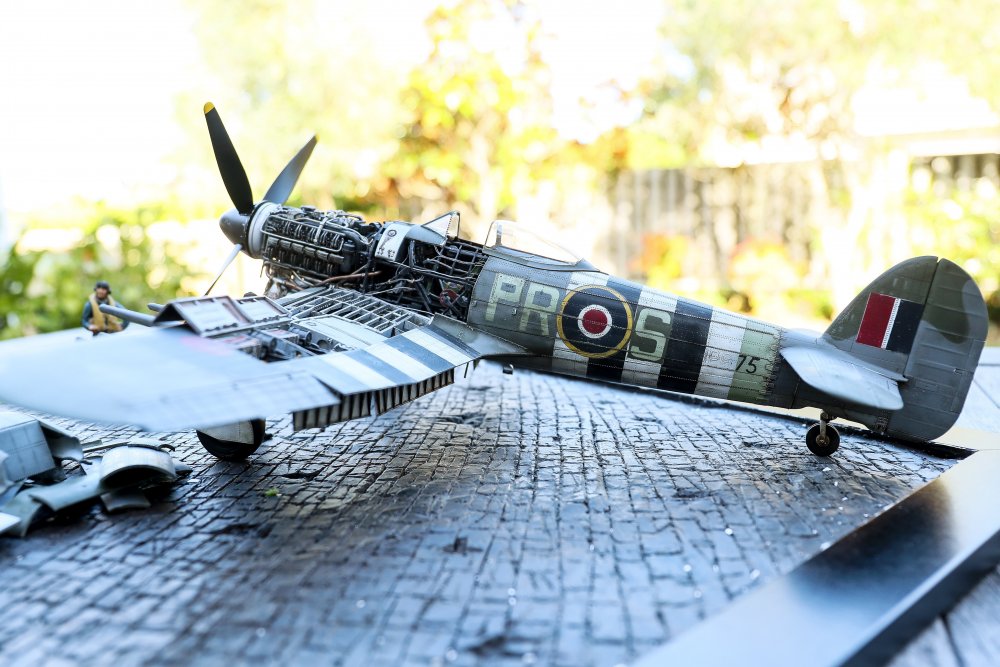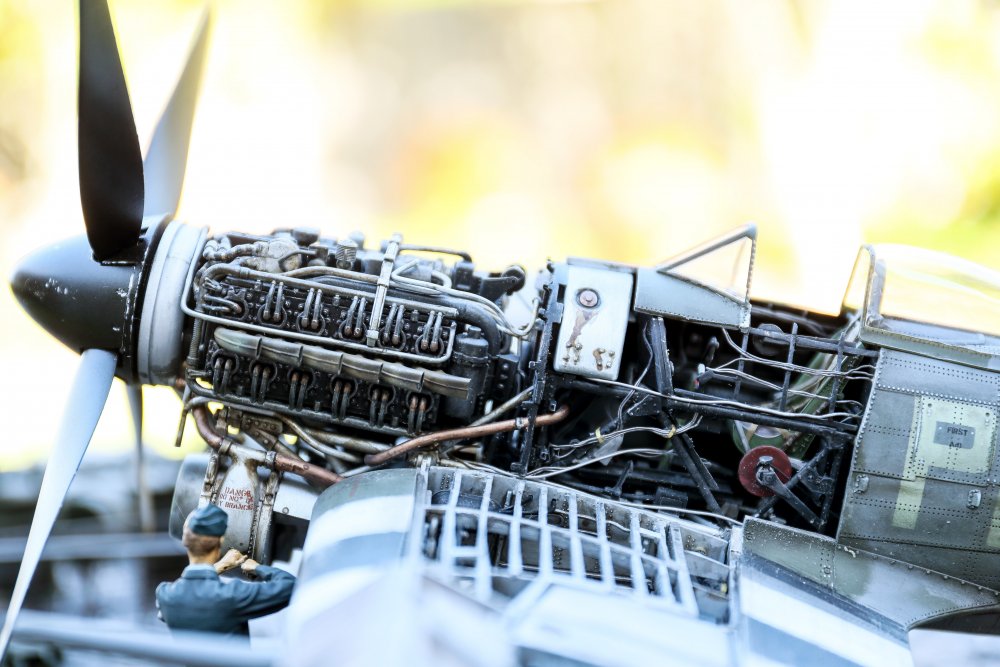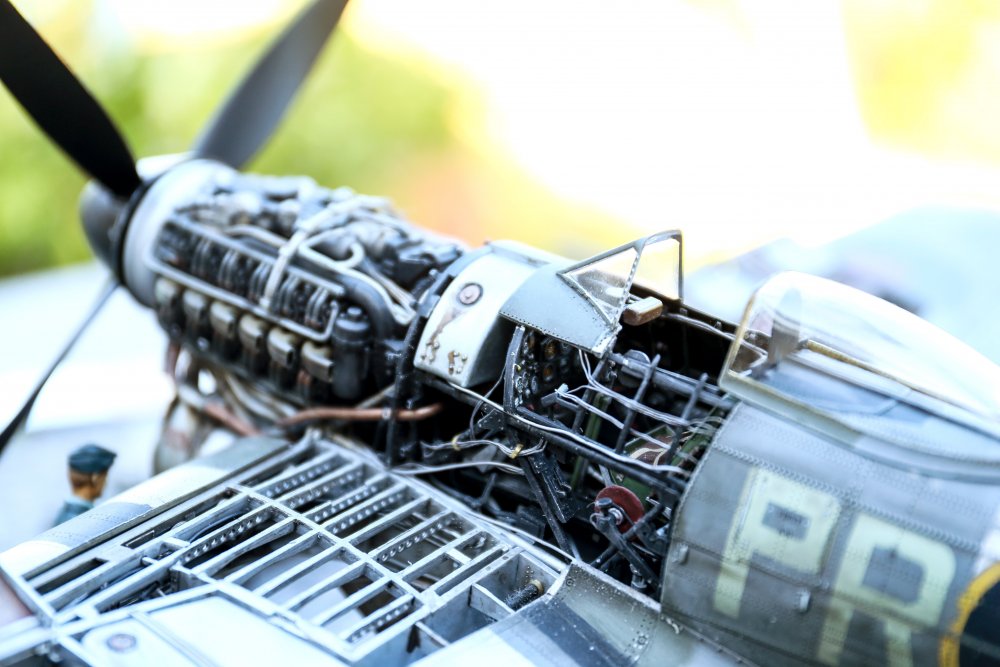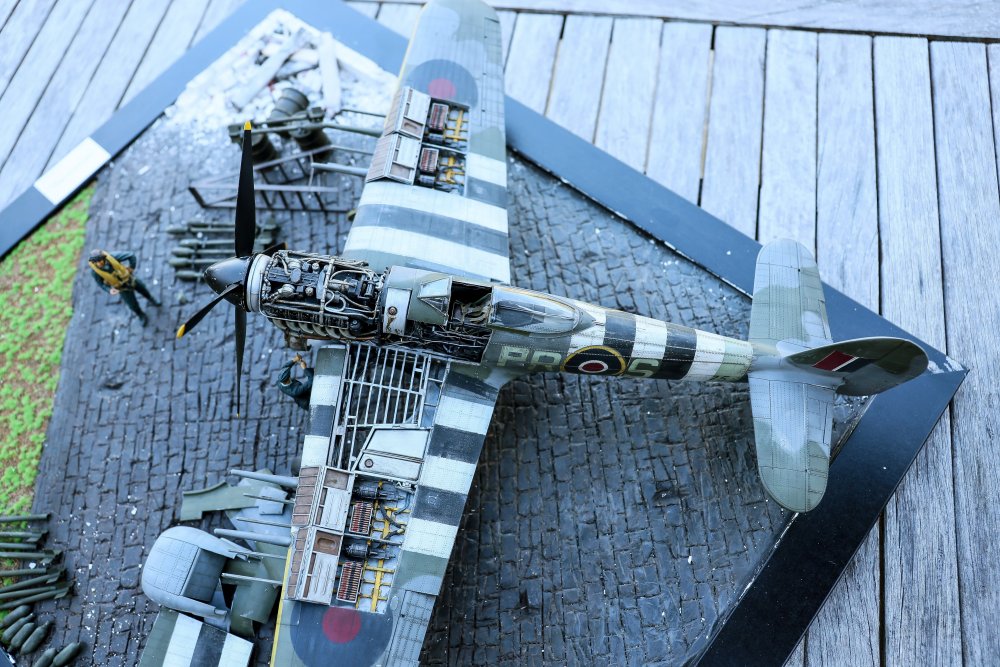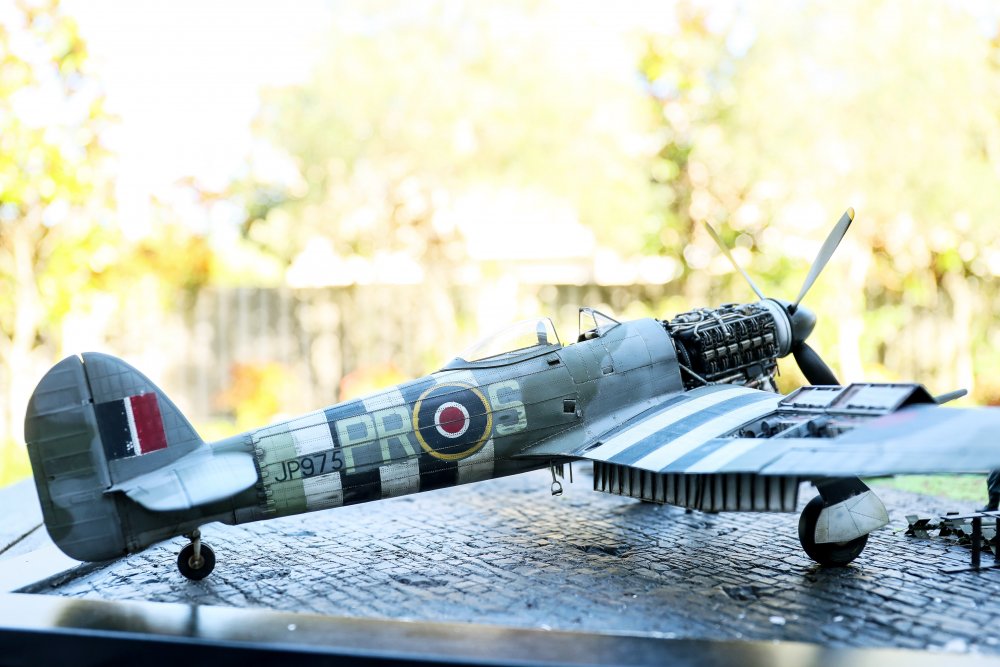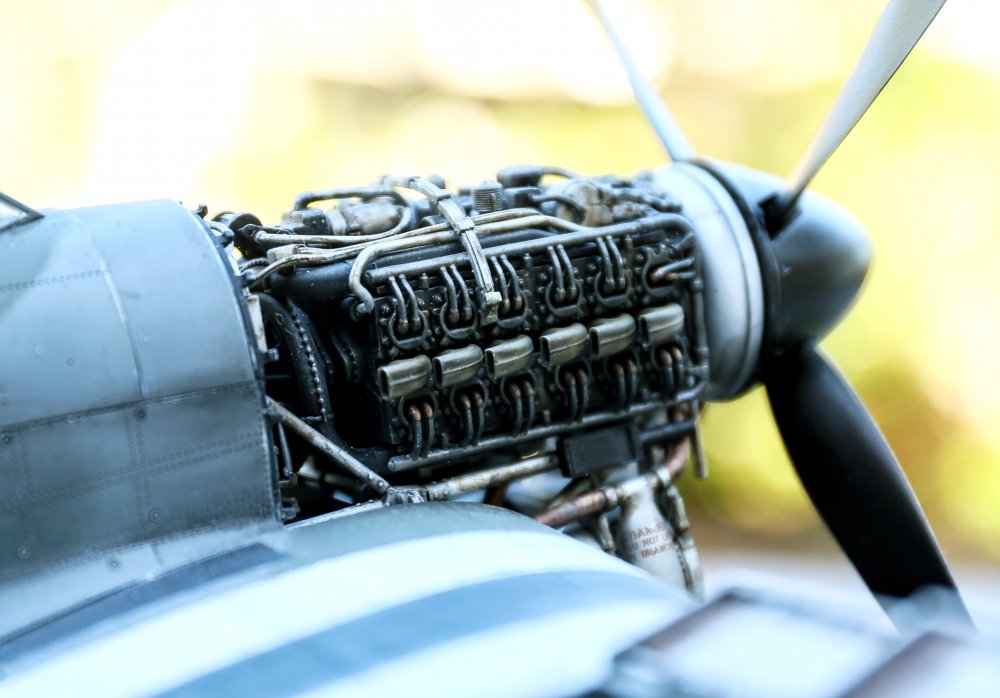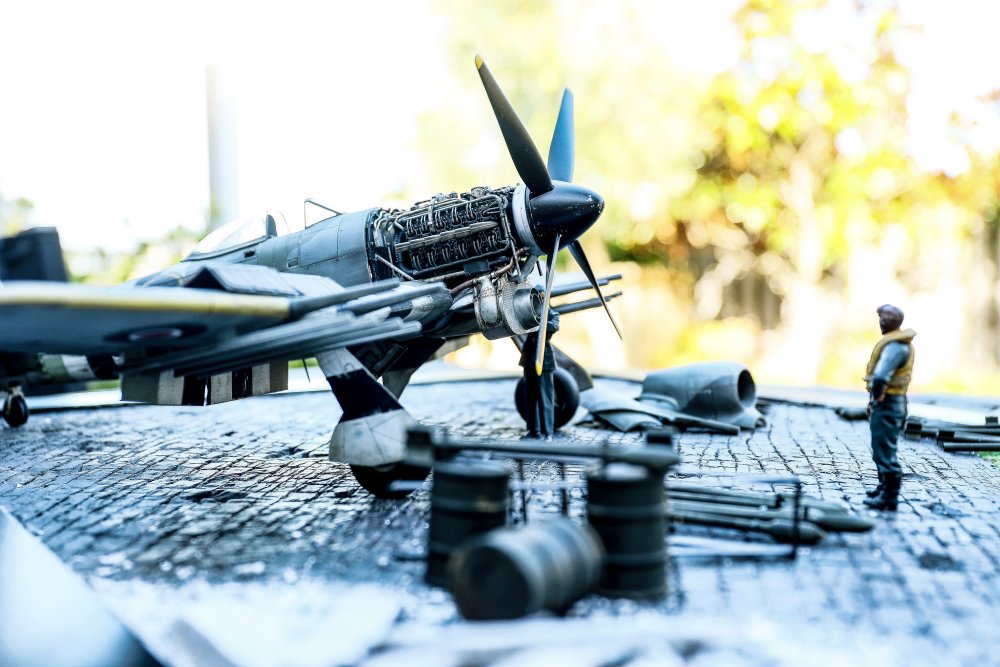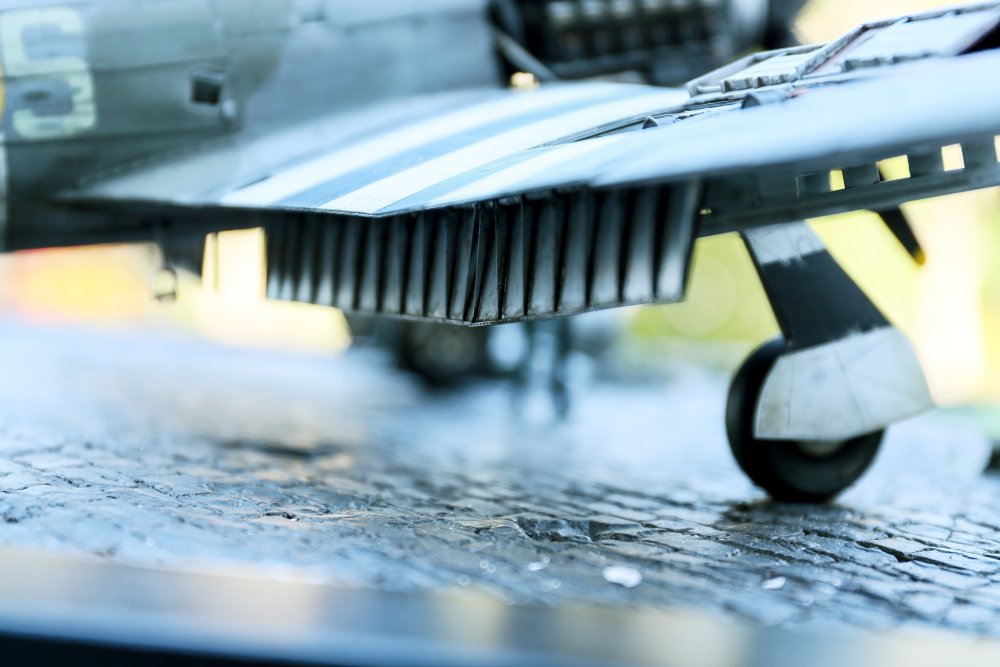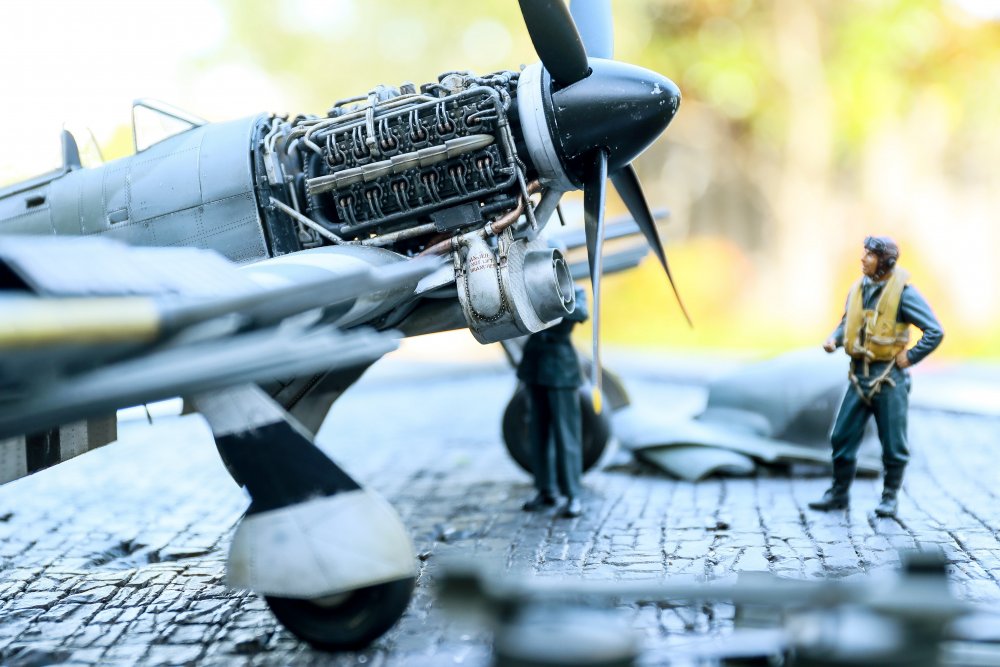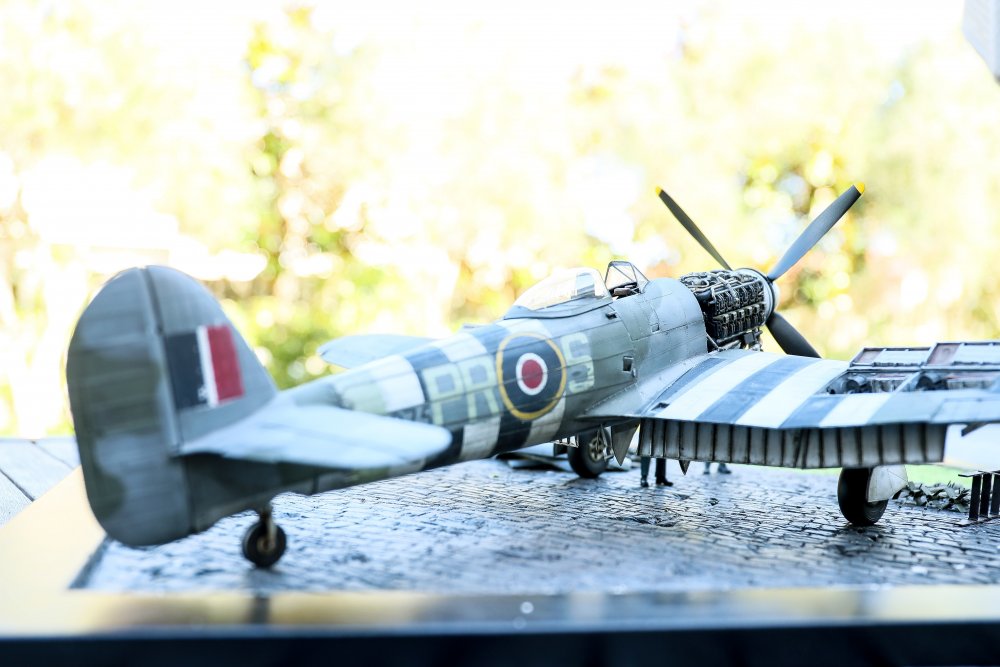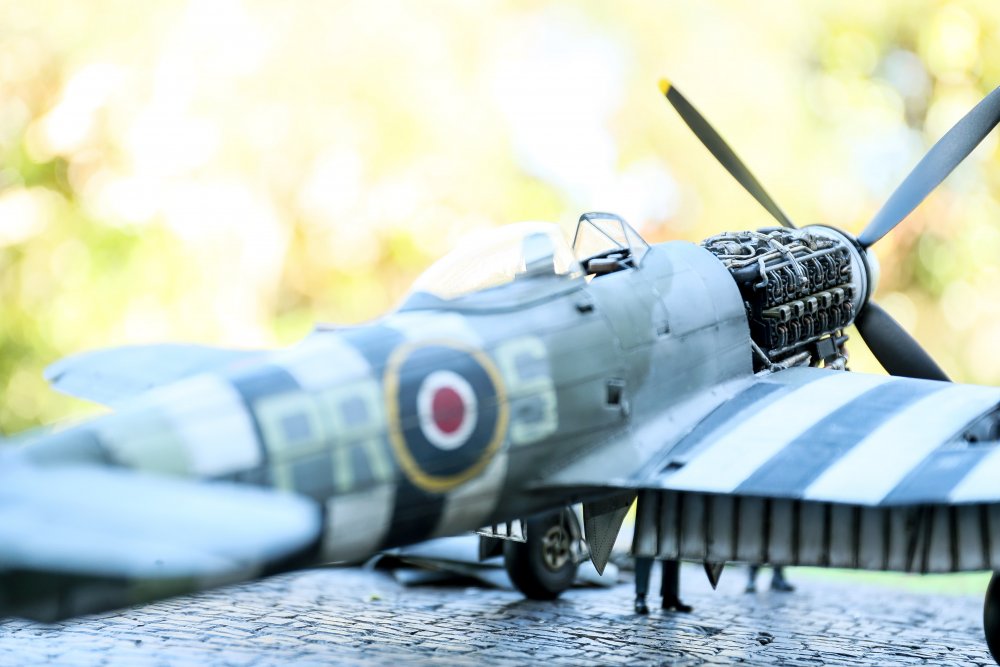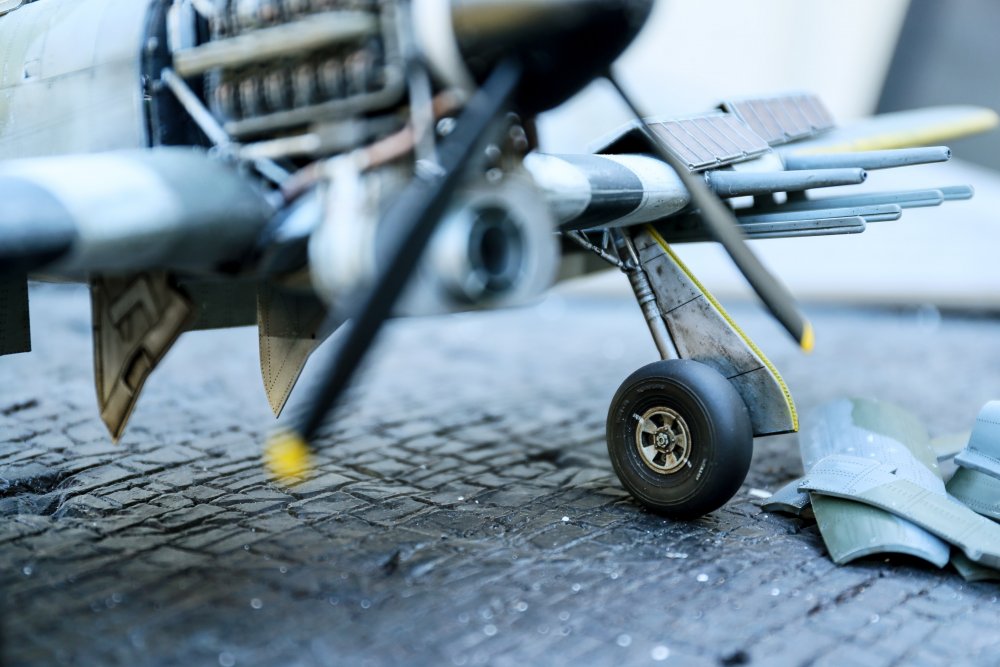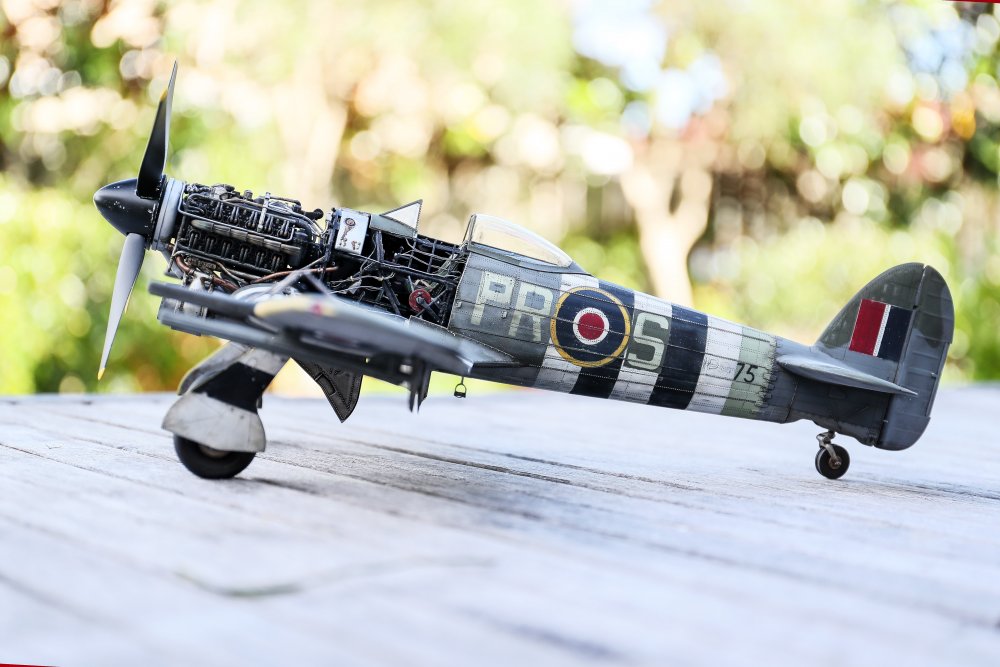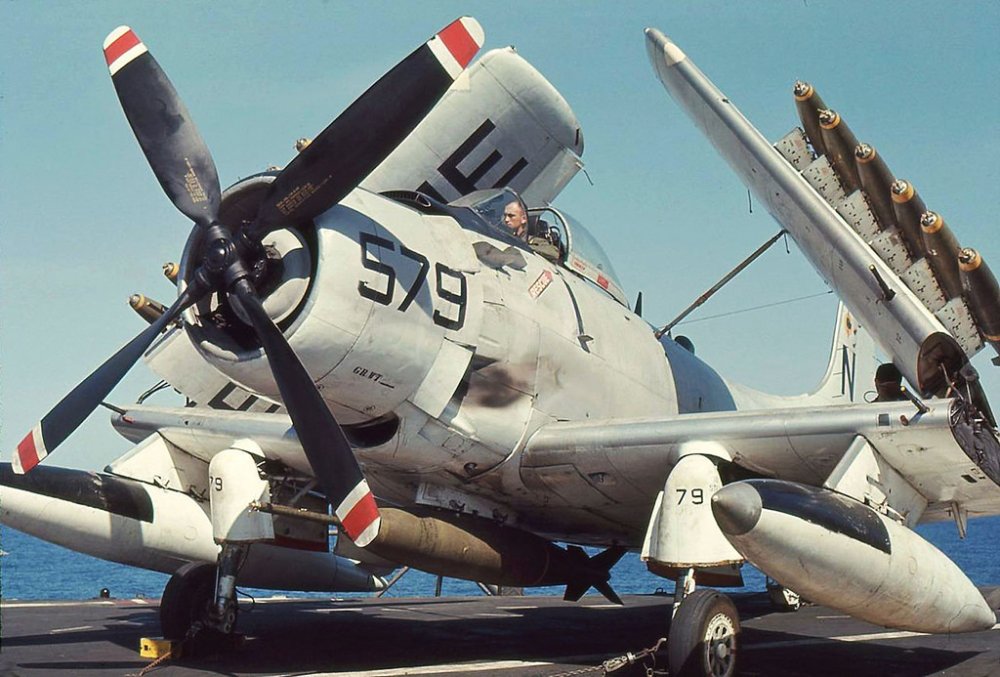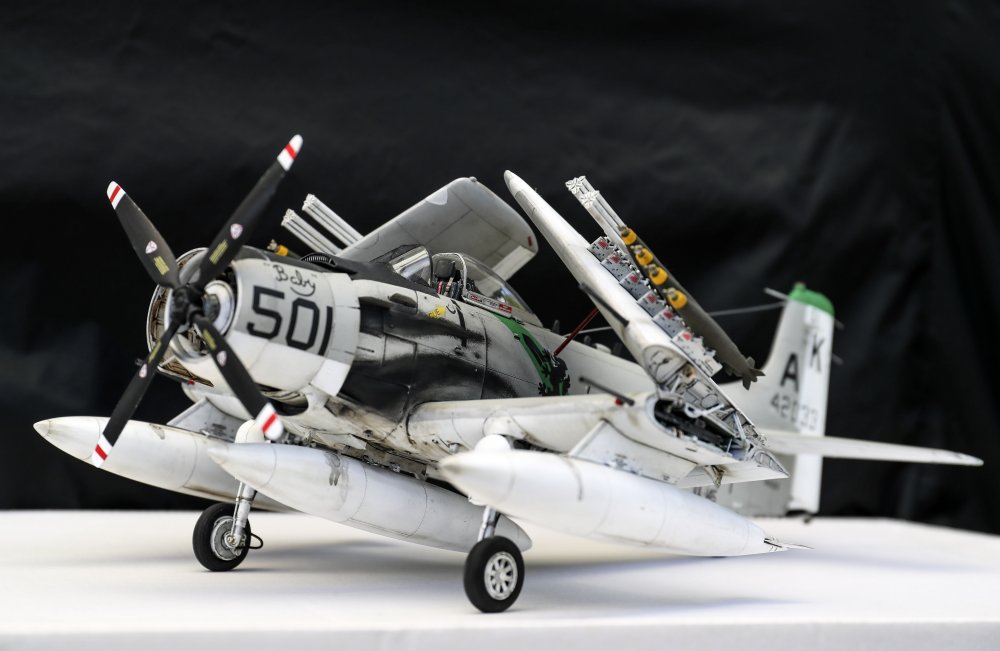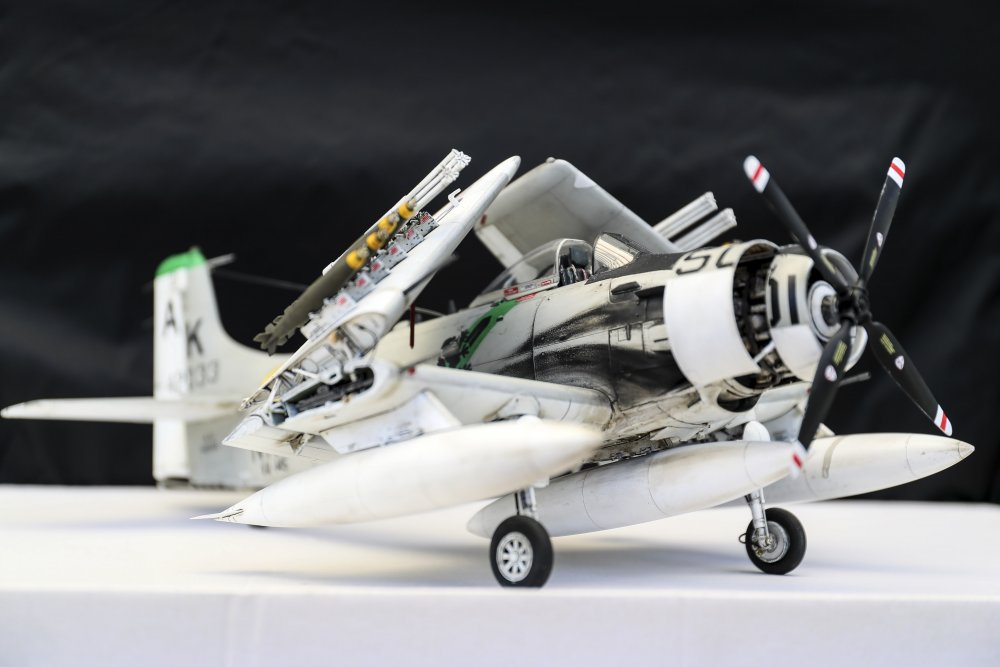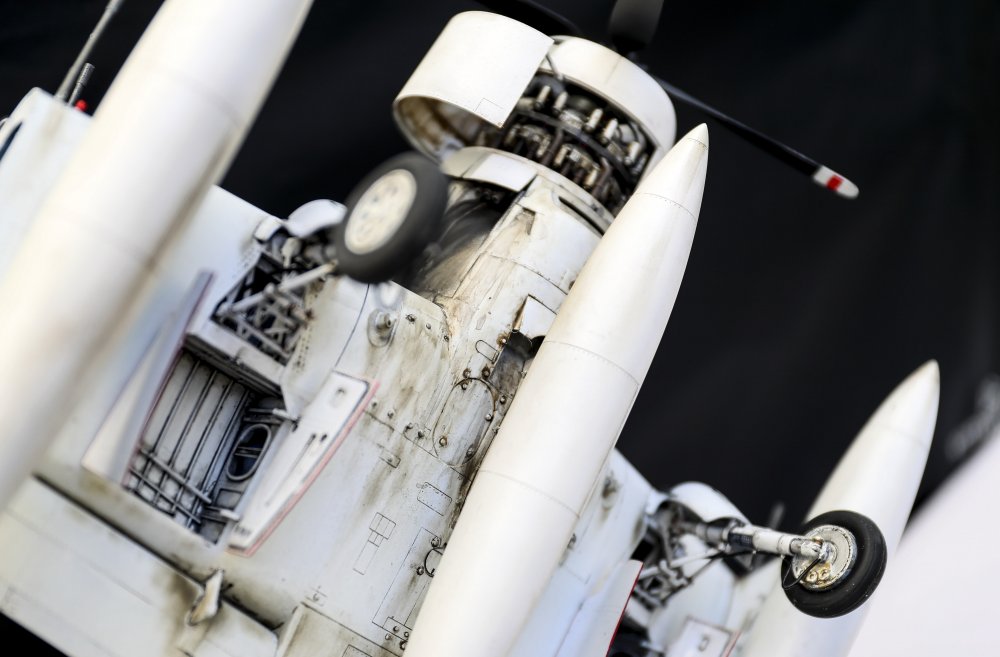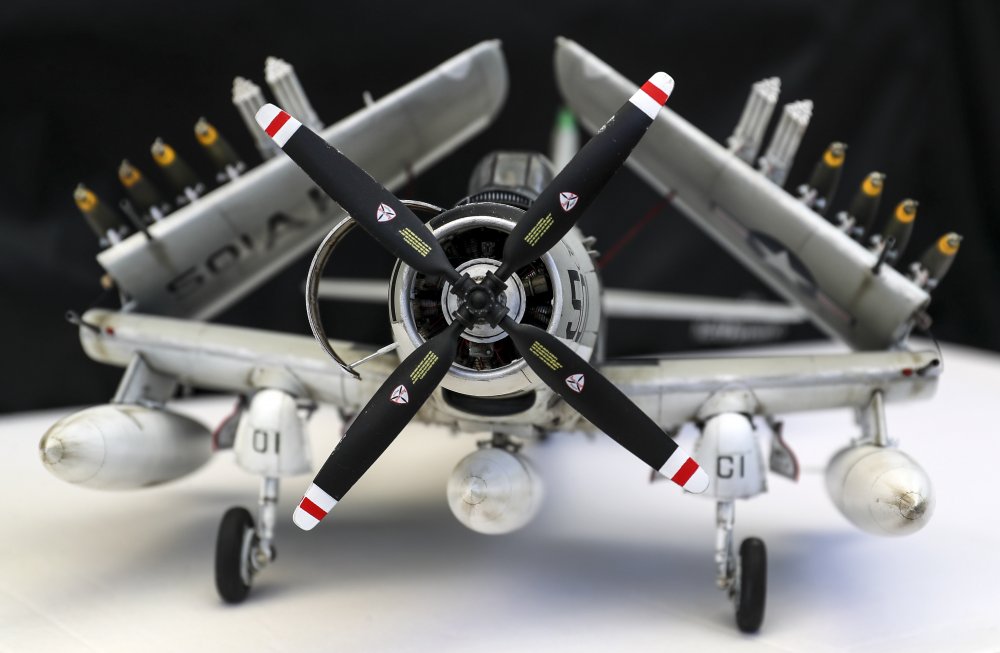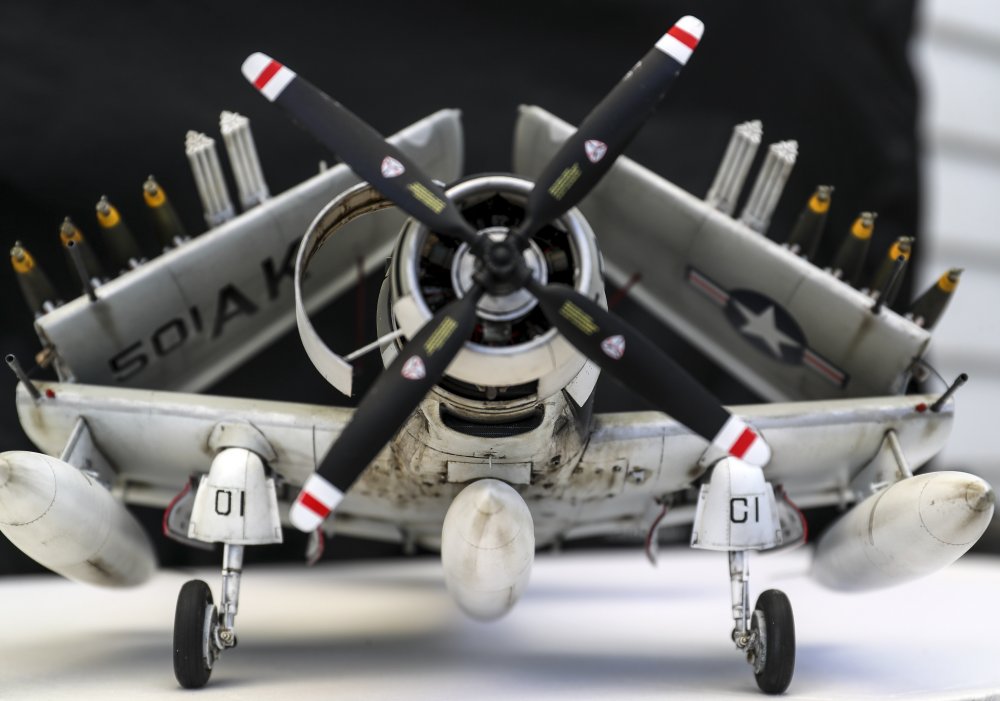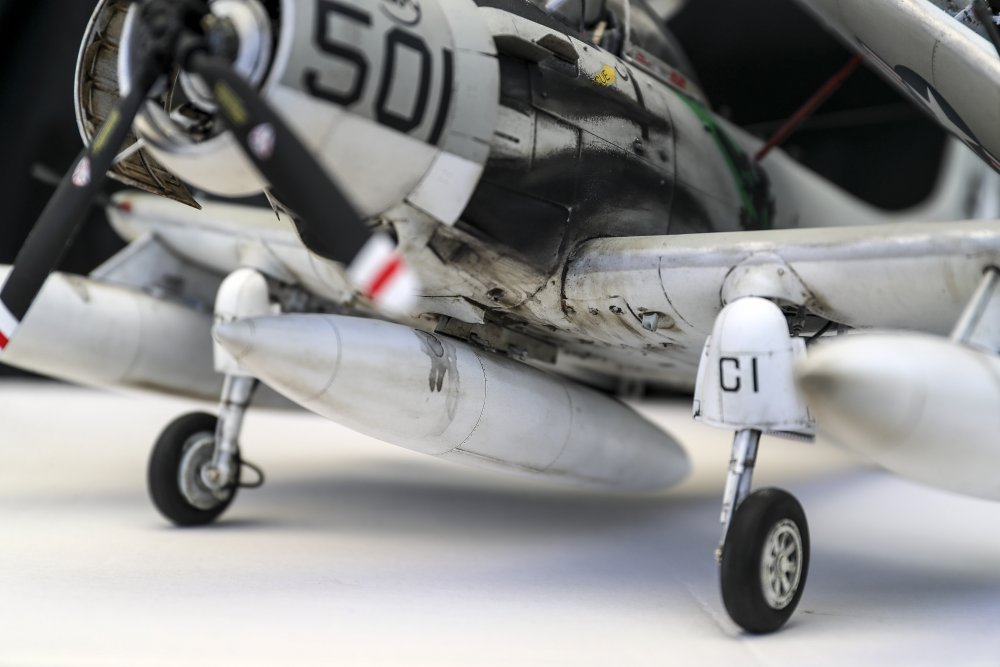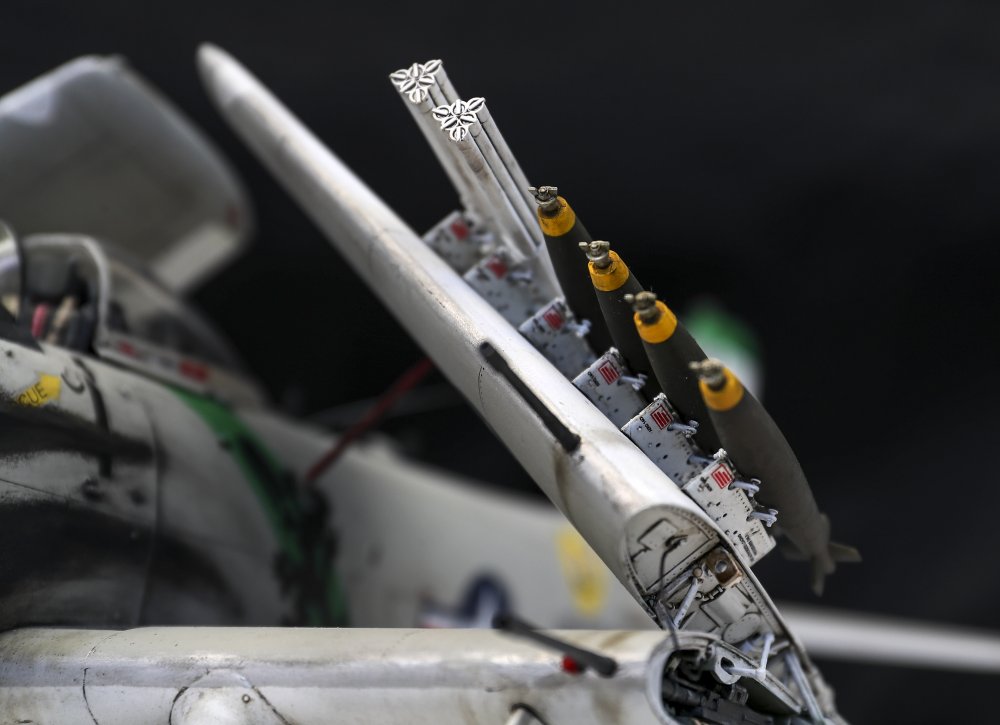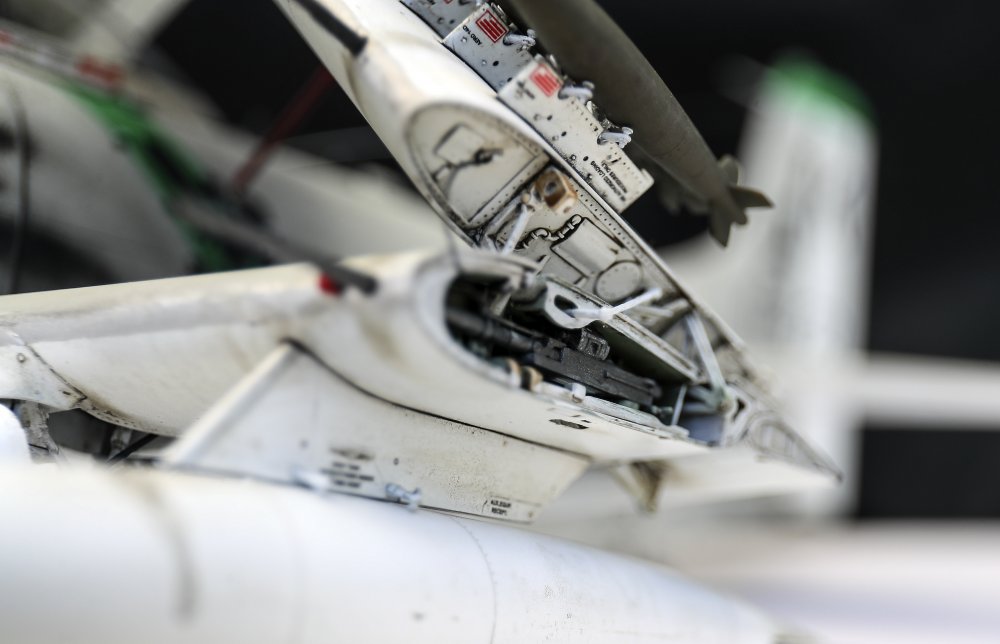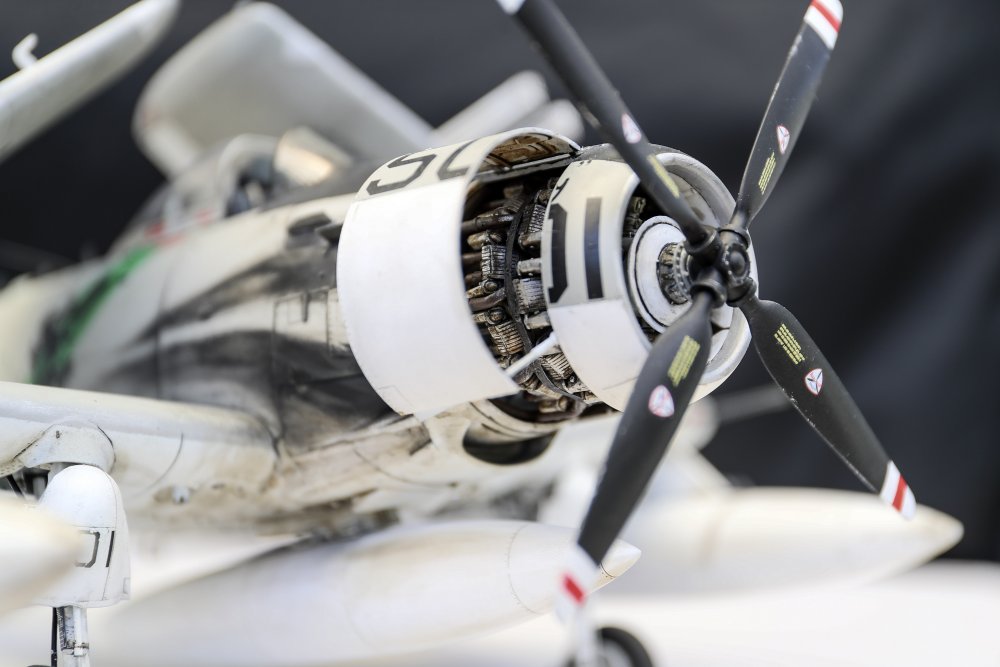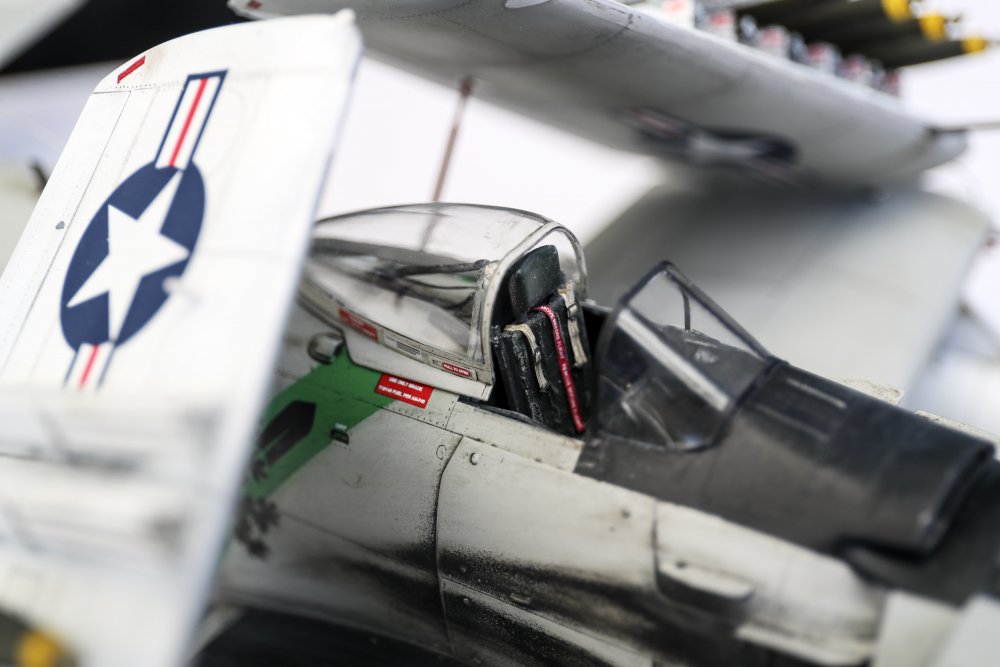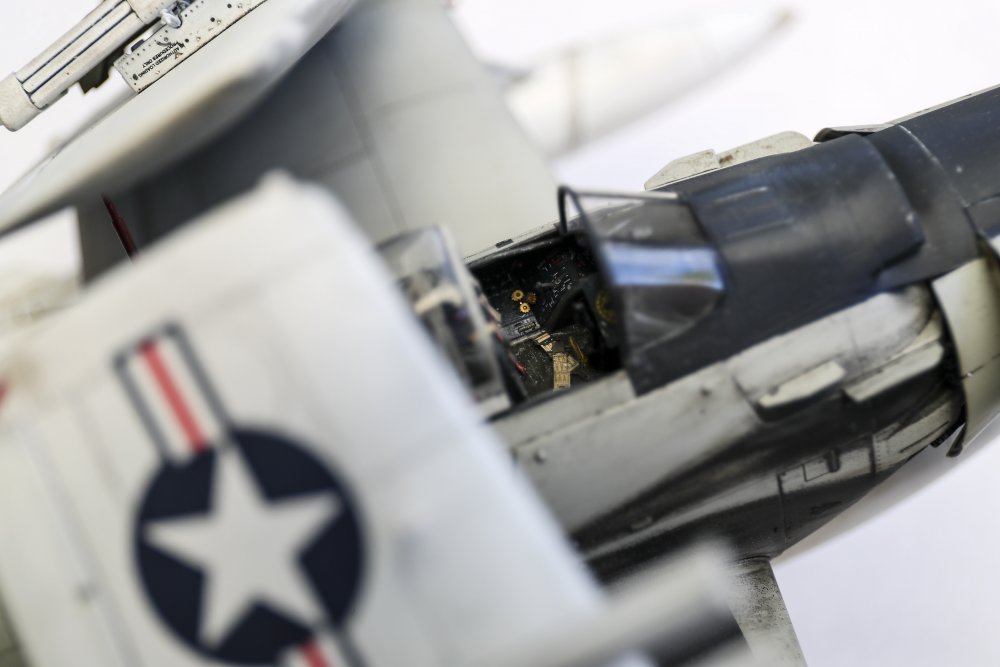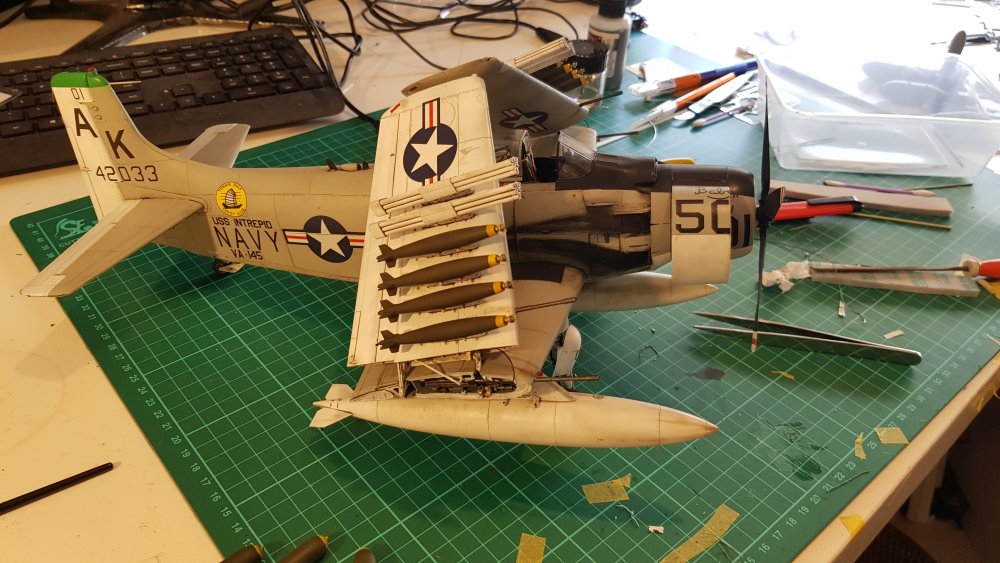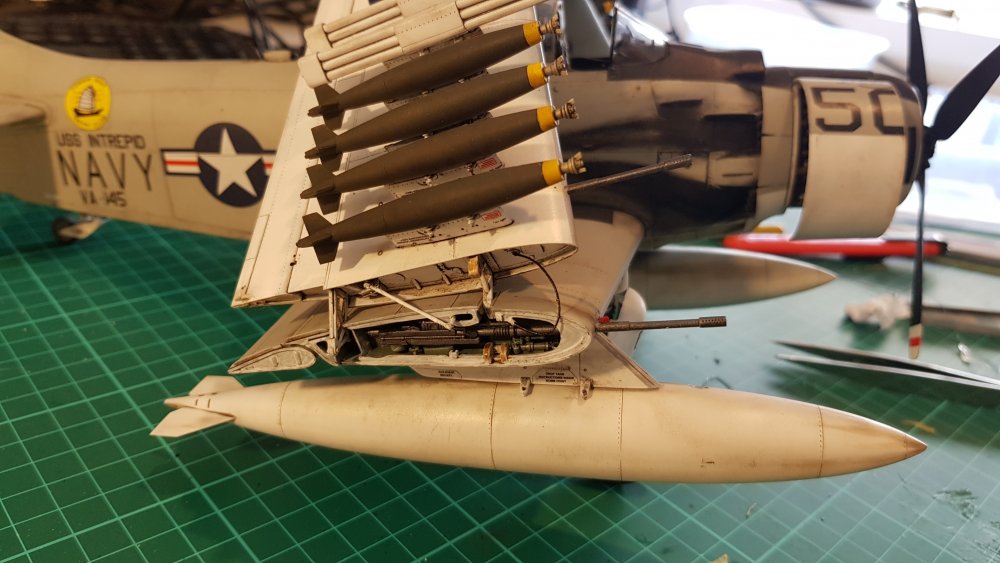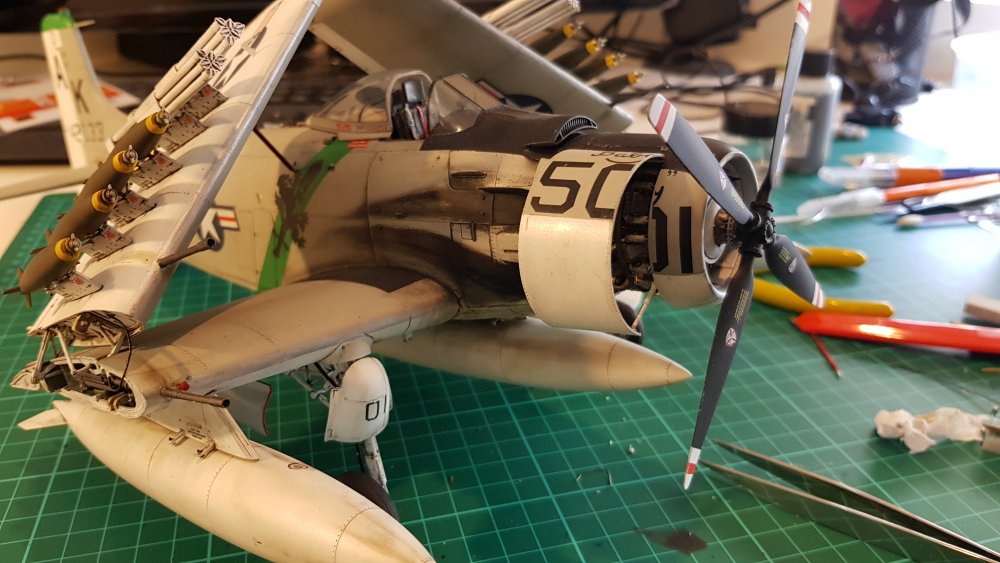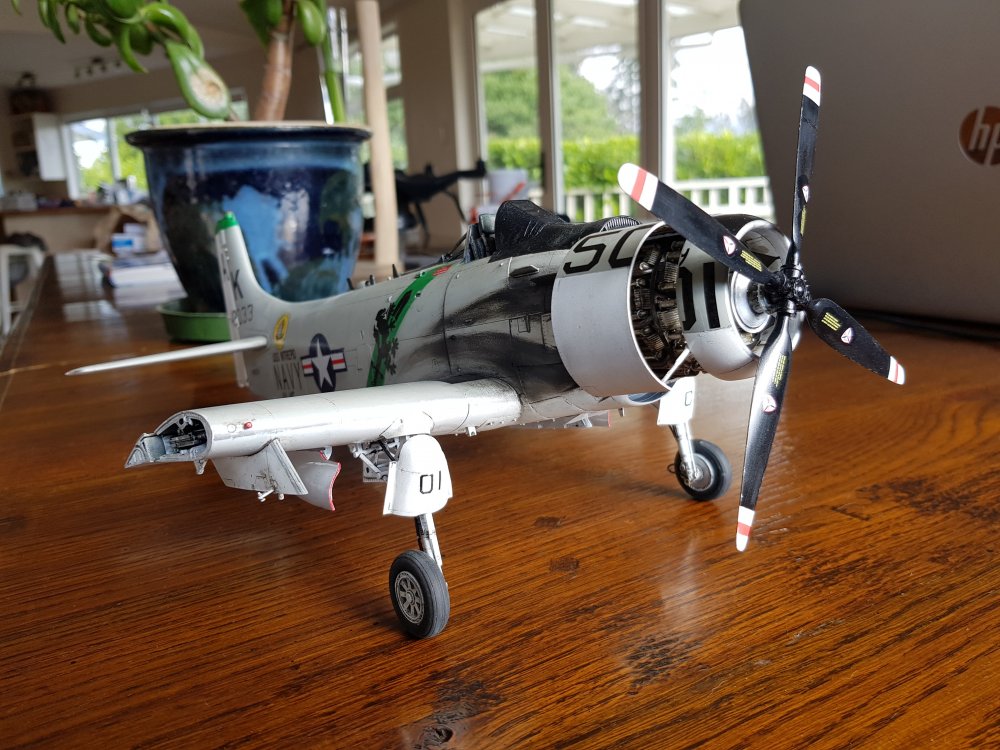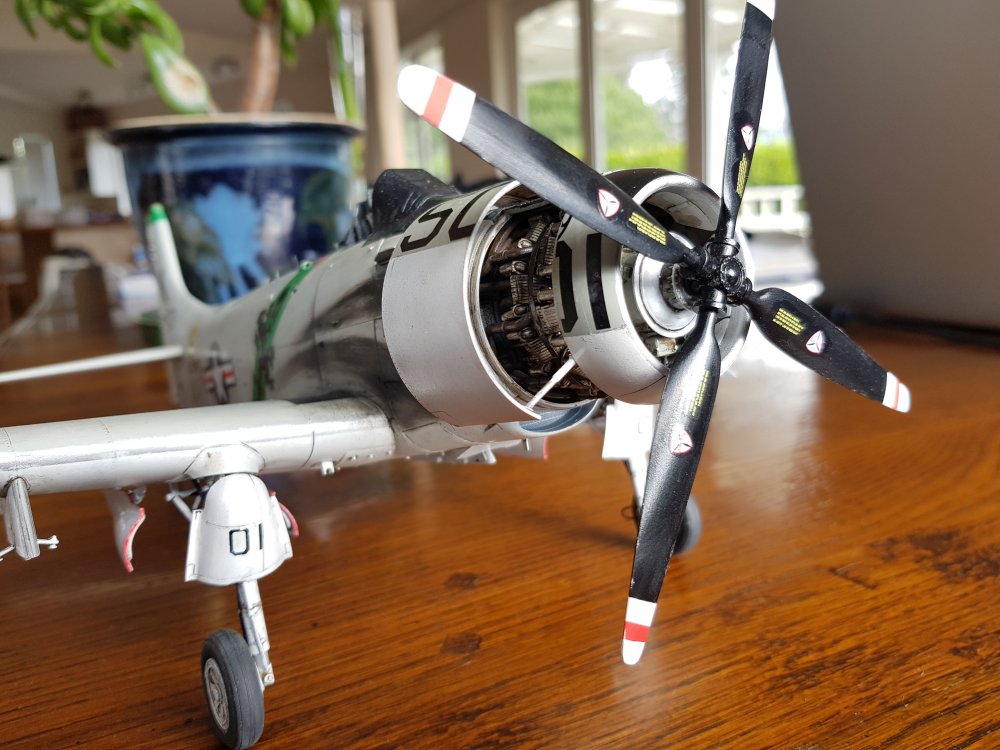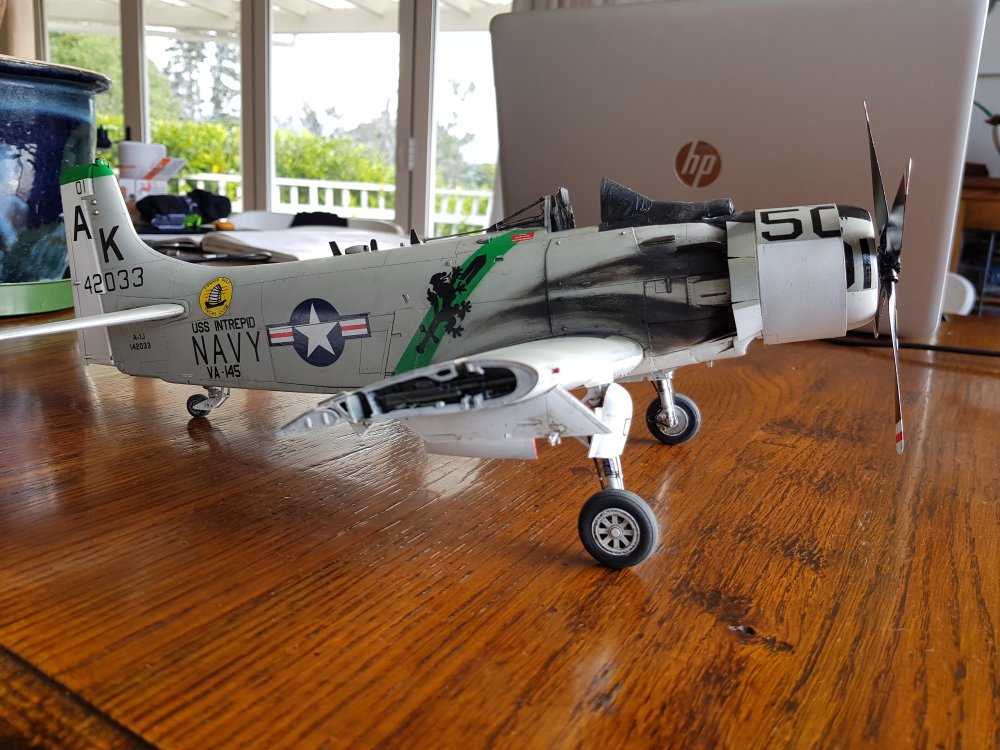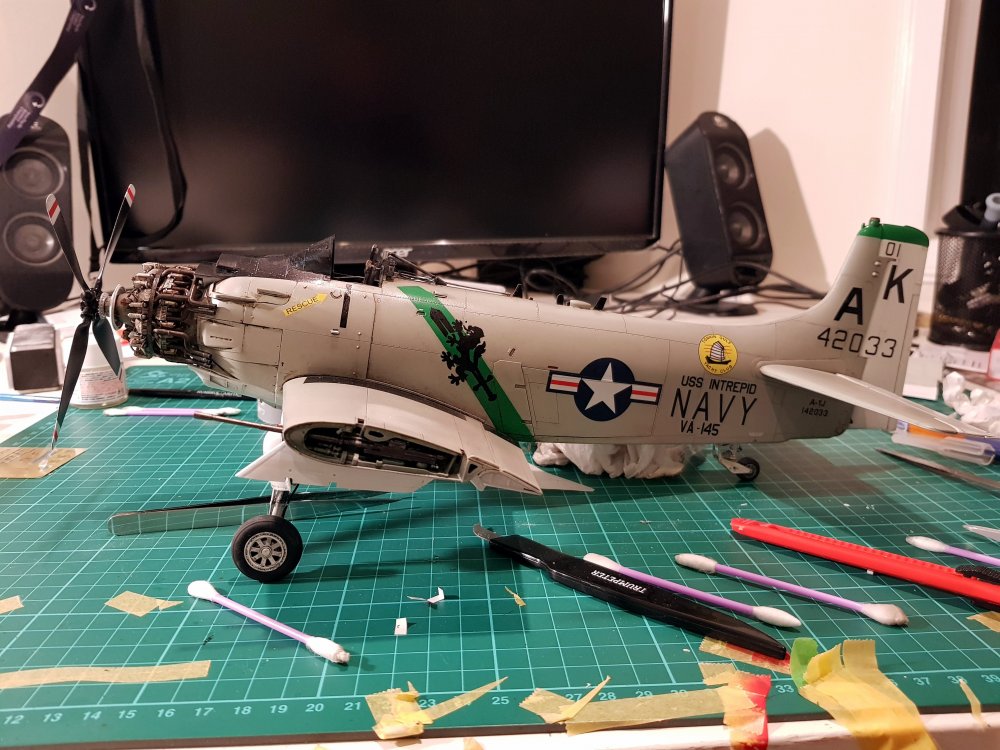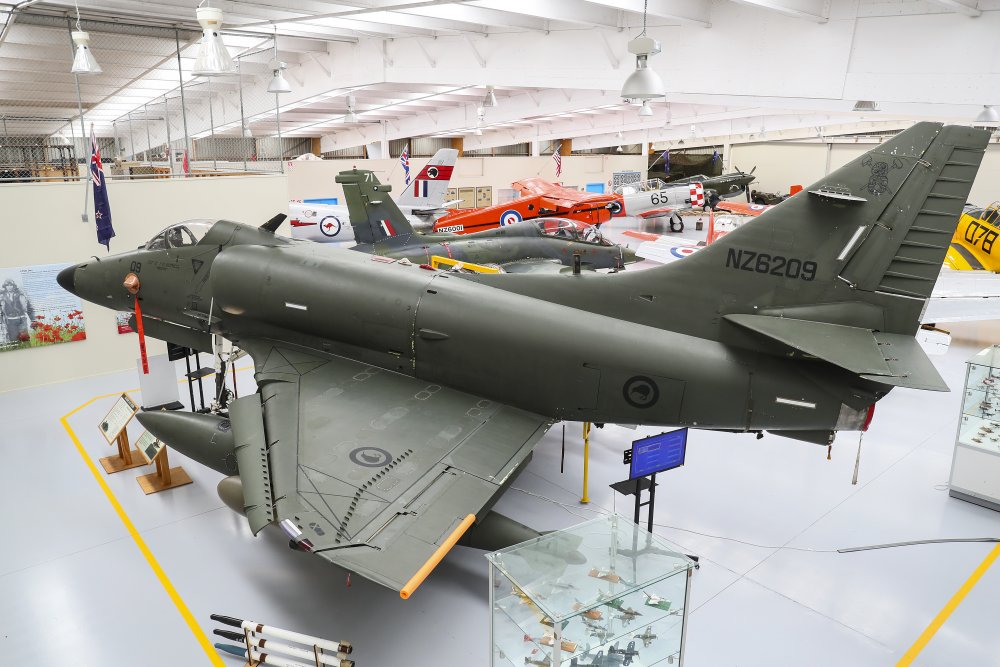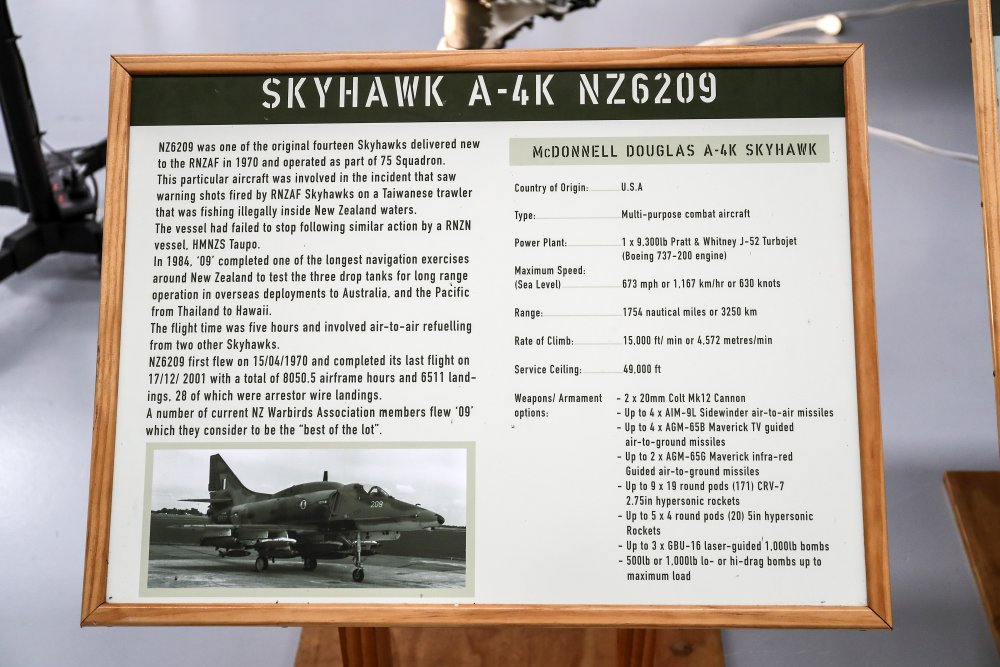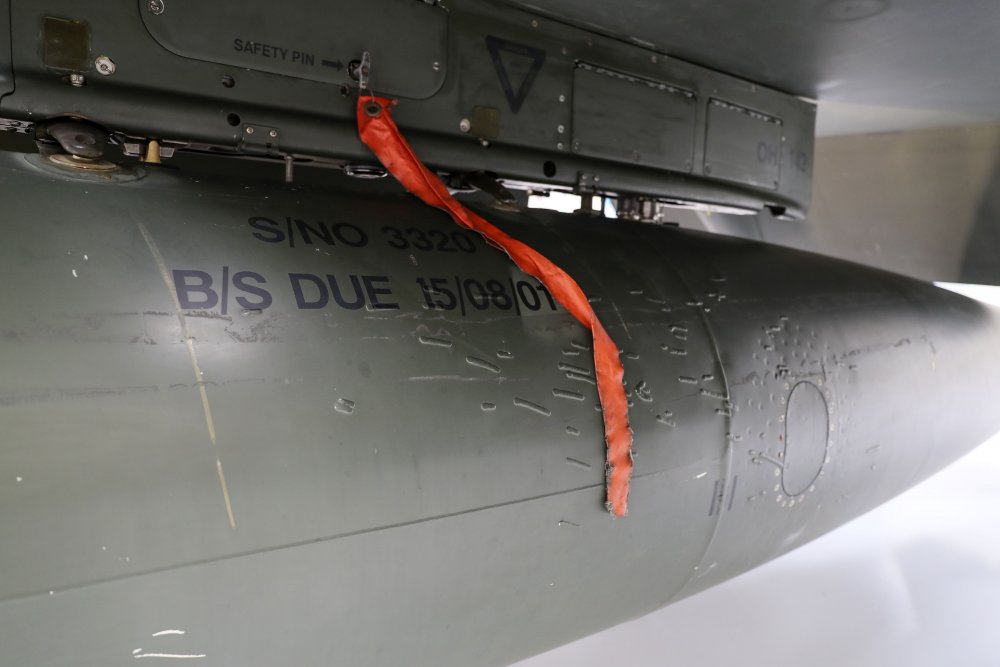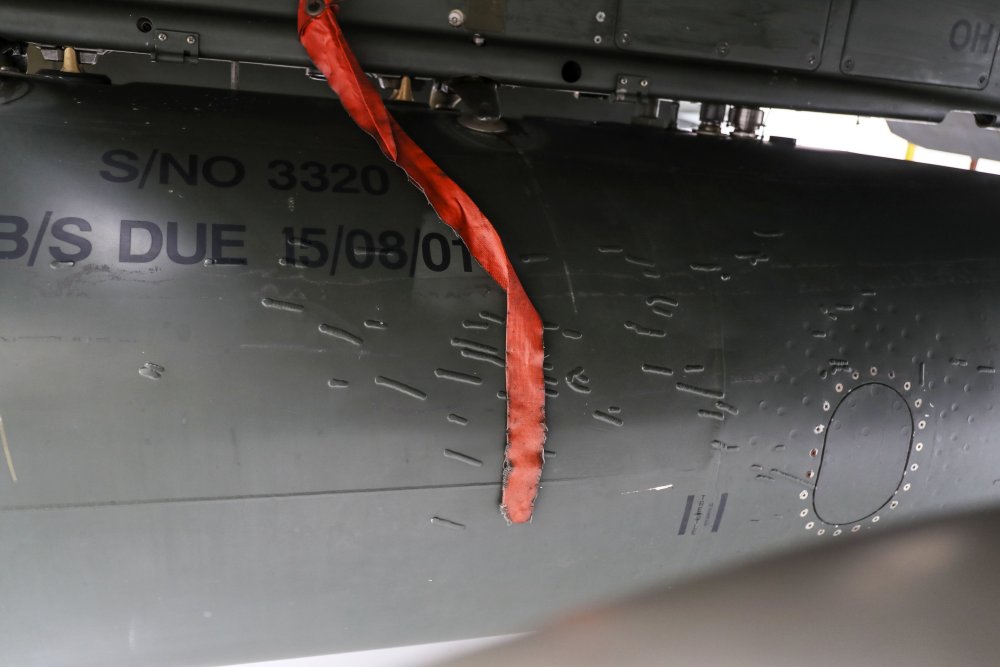
WattsNZ
Members-
Posts
37 -
Joined
-
Last visited
Content Type
Profiles
Forums
Events
Gallery
Everything posted by WattsNZ
-
Tamiya A4e 1/32 skyhawk kit converted to RNZAF A4k skyhawk NZ6209. Currently on static display at Ardmore Warbirds hanger Auckland. Aires cockpit, seat, wheel wells. Scratch built instrument panel A few bits and pieces moved around, tail straightened Scratch built intake covers Ladder by Profimodellor Custom decals by Simon Hutton at KitbuilderNZ
-
Trumpeter 1/32 F105g Custom scratch converted tail Aires Cockpit/ seats/ wheel wells Scale Model Conversion landing gear Some GT resin bits
- 5 replies
-
- 7
-

-
- thunderchief
- f105g
-
(and 4 more)
Tagged with:
-
Trumpeter 1/32 A1-J Skyraider
WattsNZ replied to WattsNZ's topic in LSM 1/35 and Larger Work In Progress
Hi Dennis, I haven't had any issues with Trump builds since then, but have been careful to prime everything before paint. -
Trumpeter 1/32 A1-J Skyraider
WattsNZ replied to WattsNZ's topic in LSM 1/35 and Larger Work In Progress
Yep, there is an option for USAF. -
Trumpeter 1/32 A1-J Skyraider
WattsNZ replied to WattsNZ's topic in LSM 1/35 and Larger Work In Progress
Hi there, yep in that image you are correct. I have seen other images where the covers are grey or absent completely -
Roden Cessna O-1 Birddog 1/32
WattsNZ replied to WattsNZ's topic in LSM 1/32 and Larger Aircraft Ready for Inspection
Thanks all. Gonna have a go at Rodens Cessna O-2 soon I've decided. -
Roden Cessna O-1 Birddog 1/32
WattsNZ replied to WattsNZ's topic in LSM 1/32 and Larger Aircraft Ready for Inspection
Some completed more styled shots of the Roden 1/32 Birddog. Hard to see the interior so have included a during build shot. Seatbelts are metal foil, some spare PE buckles. Display dials are airscale, all radio control boxes etc on sides of fuselage are scratch built. -
My recently completed Roden 1/32 O-1 Birddog. A lot has been written about this kit, most of it negative. Rightfully so in most cases. Its a basic shell of a kit with plenty of pitfalls but rewarding at the end. Had to scratch build the cockpit detail as there is none and rework and strengthen many other parts of the plane. Both wheel struts snapped as did the tail dragger. Shes a bit rough in places, the clear parts are terrible (arrived scrapping around with the other sprues and all beaten up). No matter of polishing could bring them back. But happy with the final result. Will upload better images later.
-
Airfix 1/24 Typhoon Diorama
WattsNZ replied to WattsNZ's topic in LSM 1/32 and Larger Aircraft Ready for Inspection
Thats the company! Yeah was rather pricey but the quality is excellent. The scale is a tad smaller than the Brassin 1/24 pilot to my eyes, but not that noticeable. -
Airfix 1/24 Typhoon Diorama
WattsNZ replied to WattsNZ's topic in LSM 1/32 and Larger Aircraft Ready for Inspection
Hey Rob. Thanks for that. How far to push the weathering is always a difficult thing. All the reference material i have had mixed levels of weathering. I chose to go pretty hard on it. Ground attack low altitude flying based off mostly dusty or muddy grass strips... i figured they would get pretty messed up. The mechanic figure is by a French outfit. Will dig out the link for you as i quite honestly cant remember who it was! -
Airfix 1/24 Typhoon Diorama
WattsNZ replied to WattsNZ's topic in LSM 1/32 and Larger Aircraft Ready for Inspection
The card I have used in the frame of the diorama is a copy of Stellins card found in his flight bag at the crash site. -
My big project for the last several months, Airfix's 1/24 Typhoon. Completed in markings of Flight Sargeant James Stellin, 609 Squadron RAF. I was looking for a New Zealand theme for my build and the Stellin story stood out among others. He wasn't an ace, didn't appear to be a pilot of any particular note, but his sacrifice was significant to the people of Saint-Maclou-la-Brière, a small village in the Seine-Maritime region of Normandy. Here is the complete Stellin story: As his damaged Hawker Typhoon fighter-bomber rapidly lost height, Pilot Officer James Stellin struggled to avoid crashing into Saint-Maclou-la-Brière, a village of 370 people between Le Havre and Dieppe in northern France. He succeeded, but at the cost of his own life. The villagers gave him a hero’s funeral and have honoured his memory ever since. James Kingston (‘Joe’) Stellin was one of several thousand New Zealanders who flew with the Royal Air Force over Europe in support of the D-Day landings in 1944. Born in Wellington on 2 July 1922, he was the son of James and Beatrice Stellin of Lyall Bay. He attended Scots College before enlisting in the Royal New Zealand Air Force in 1942 and beginning pilot training. On 3 June 1944, three days before D-Day, he and two other Kiwi pilots were posted to 609 Squadron, RAF, at Thorney Island airfield, Hampshire. Over the following month, 609’s pilots flew numerous missions over Normandy, targeting German radar stations, tanks and other vehicles. In early July the squadron moved its base to France, arriving at Plumetot, north of Caen, under shellfire and in mud and rain. For the next six weeks Stellin flew almost daily missions against German tank concentrations, strongpoints and motor transport in the Falaise area. On 18 August, 609 Squadron’s Typhoons destroyed at least seven German tanks and 12 vehicles. Stellin flew again that evening, attacking vehicles on the Vimoutiers–Orbec road and setting five alight. On the 19th, 609 Squadron again targeted German transport trying to escape the Falaise pocket. At 8.30 a.m. Stellin took off from Martragny airfield, flying Typhoon JP975. After destroying several tanks and trucks, Stellin’s aircraft was heading home when he asked permission to descend to attack a vehicle. He did not return to his formation and asked for a homing to find his way back to base. He was given a course but later reported that he was short of fuel. It is thought that his plane was hit by flak near Bernay. A teacher at Saint-Maclou-la-Brière, Monsieur Jacobs, described the scene: Stellin bailed out at the last moment, but his parachute failed to open and he was killed. He was 22 years old. His funeral in Saint-Maclou-la-Brière was attended by 1200 people from the surrounding area. His grave in the local cemetery was later designated a Commonwealth War Grave; ever since it has been decorated regularly with flowers. In 1946 M. Jacobs, who had been active in the local Resistance, wrote a moving letter to Stellin’s parents. The following year the Kiwi pilot was posthumously awarded the Croix de Guerre avec Palme. The people of Saint-Maclou-la-Brière later engraved Stellin’s name onto the war memorial for the dead of their own village. In 1964 they erected a black marble memorial stone to Stellin outside the gates of their church. In 2001 the area in front of the St Maclou church was named ‘Place Stellin’. Stellin has also been commemorated in New Zealand. A memorial board was erected in the Kilbirnie RSA and when that building closed it was moved to his old school, Scots College. The College library is named in Stellin’s honour and the school holds other memorabilia. When James’s father, a prominent Wellington businessman and developer (he was responsible for the subdivisions of Avalon, Kingston and Strathmore Park), died in 1964, he bequeathed funds to build the memorial in Saint-Maclou-la-Brière. He also gifted land on the eastern side of Tinakori Hill to the Wellington City Council to create the James Stellin Memorial Park. In August 2007, Wellington Mayor Kerry Prendergast and French Ambassador Michel Legras unveiled a long-promised plaque in the Memorial Park. Its not known what 609 squadron letter Stellin was flying the day he died, all that was recorded was the plane serial number JP975. I chose to Use squadron letter "S". The airfix kit itself was, for the most part, excellent. The amount of "flash" removal was, at times, frustrating, especially on the intricate engine parts. The build is completely OTB except for the resin wheels, seat belts and photoetch flaps. I decided to use the eduard flaps instead of spending hours filling and sanding ejector marks off the kit flaps. Photos are a bit average but such was the lighting. Comments welcome.
- 16 replies
-
- 12
-

-
Trumpeter 1/32 A1-J Skyraider
WattsNZ replied to WattsNZ's topic in LSM 1/35 and Larger Work In Progress
Totally agree regarding the cowlings and appreciate your honesty, they were the part that I thought looked to new as well. I will give them another "wash" to blend them more. I think the photos may exaggerate their whiteness a bit as well. I had so many issues with the paint on this that my original plan went out the window and was replaced by one of simple survival! To put it dramatically. I had pre-shaded initially but the MM paint peeled and I changed my entire painting approach. Big learning curve with best aged effects and how to achieve them... Thanks again. -
Trumpeter 1/32 A1-J Skyraider
WattsNZ replied to WattsNZ's topic in LSM 1/35 and Larger Work In Progress
Thanks Rob. I thought about the prop for quite a while and looked at a lot of reference images. the props on Navy spads didn't appear to get as worn as their ground based cousins. The attached image shows the lack of wear on an otherwise weathered and used looking spad. It may of course varied from plane to plane, and I could probably/should have aged the prop down a bit more. Where else do you think looks to new as there are a couple of places I think the same. -
Trumpeter 1/32 A1-J Skyraider
WattsNZ replied to WattsNZ's topic in LSM 1/35 and Larger Work In Progress
Complete, or as complete as I'm taking it for now. The kit itself was excellent, I don't recall having any issues with parts going together. The Eduard PE cockpit adds some nice extra detail that you can almost still see with the wings folded. (I had to fold the wings as I wouldn't have anywhere big enough to park it otherwise!). Radio antennae is a section of 11 gauge guitar string. Wing support struts were scratch built using brass tubing. These seem to be present on parked up spads with a full load on the pylons but are not included in the kit for some strange reason. The weathering was really just a composite of many reference pictures. They were dirty, but not always dirty. I could probably have taken it further... Tamiya weathering palettes used for the majority of weathering along with some AK interactive stuff. The entire plane was given a wash of Flory clay wash which works well in helping create that tired weather worn look I was attempting. Anyway, big learning curve on this. My first proper big build to this level. On to the RNZAF A4-K Skyhawk. -
Trumpeter 1/32 A1-J Skyraider
WattsNZ replied to WattsNZ's topic in LSM 1/35 and Larger Work In Progress
Light doesn't show it to well. Looked dirty. but maybe not enough as you say! -
Trumpeter 1/32 A1-J Skyraider
WattsNZ replied to WattsNZ's topic in LSM 1/35 and Larger Work In Progress
Moving forward! Almost complete, few minor things to finish (antenna wire and wing anti stat wire) and its done. May also have a play with the exhaust as well... still not happy with that. -
Trumpeter 1/32 A1-J Skyraider
WattsNZ replied to WattsNZ's topic in LSM 1/35 and Larger Work In Progress
The Skyraider is almost complete. Made an attempt at the "infamous" engine smoke down the fuselage. I took a while to decide on the best technique, read posts on other skyraider builds and then decided to combine a few. I stared by putting a layer of gloss on the area to be weathered the did the initial pattern with Tamiya flat black, diluted and sprayed at a low pressure. I then sanded back to detail more and achieve the look I was after... kind of. Then various Tamiya weathering palette colours were used to add some more detail... I'm sort of happy with it and sort of not, but looking at archive images of skyraiders there seems no perfect look to the pattern... so it is what it is! Now to finish the wings, get them attached in the folded position and attach some ordinance! -
Trumpeter 1/32 A1-J Skyraider
WattsNZ replied to WattsNZ's topic in LSM 1/35 and Larger Work In Progress
Yeah he was a great guy, really accommodating with my son who is a bit of a warbirds nut! I just wish they had put the Skyhawk on display the other way round so you can see the front from the mezzanine. Great little aircraft though. Looking forward to starting the build and attempting to replicate it as closely as possible. One major drawback to the Trumpeter kit I ordered is it has the straight refueling probe... have seen after market bent one made by AMS but not in current production and not even ebay has any! Might be an experimental scratch build... -
Trumpeter 1/32 A1-J Skyraider
WattsNZ replied to WattsNZ's topic in LSM 1/35 and Larger Work In Progress
Progress.. finally! Starting to look like an aircraft. Some weathering done over a gloss coat using a dark brown clay wash. Left side decals applied. Considering the setbacks experienced im more than happy. I think I may be winning! -
Trumpeter 1/32 A1-J Skyraider
WattsNZ replied to WattsNZ's topic in LSM 1/35 and Larger Work In Progress
This will be the next project once the skyraider is complete. NZ6209 "09" A4-K Skyhawk of the RNZAF. I did a photo job for the regional paper when the plane was moved to the Warbirds display at Ardmore airport and my son who was 5 at the time is in the picture with a former pilot of the skyhawk. Best part is that the reference material is only a 25min drive away. I went and grabbed some reference shots today in anticipation of starting the project. Some really interesting details that you only see looking at a real aircraft in person, such as the weld marks on the external wing mounted fuel tanks. These are repairs to indentations caused by the ejected shell casings... will think of a way to add that detail to the model... -
Trumpeter 1/32 A1-J Skyraider
WattsNZ replied to WattsNZ's topic in LSM 1/35 and Larger Work In Progress
Thanks for that. All back on track now. Took quite a while to get the remaining paint removed. The green detailing paint is done, its a bit dark but will weather it back, cockpit is complete with the yankee seat installed. Have added some extra wiring to the ejection system just to make things a bit more interesting. Really just working on the weathering now, sanding back some paint to get a more faded look and spraying some lighter grey on. Also sprayed some slightly darker grey as well. Will do a lot more of the weathering with acrylics once I have a layer or two of gloss down. Considering the "issue" I had I'm happy enough with how its progressing. Want to get it complete so I can start the next project. An A4-K RNZAF Skyhawk, NZ6209.

